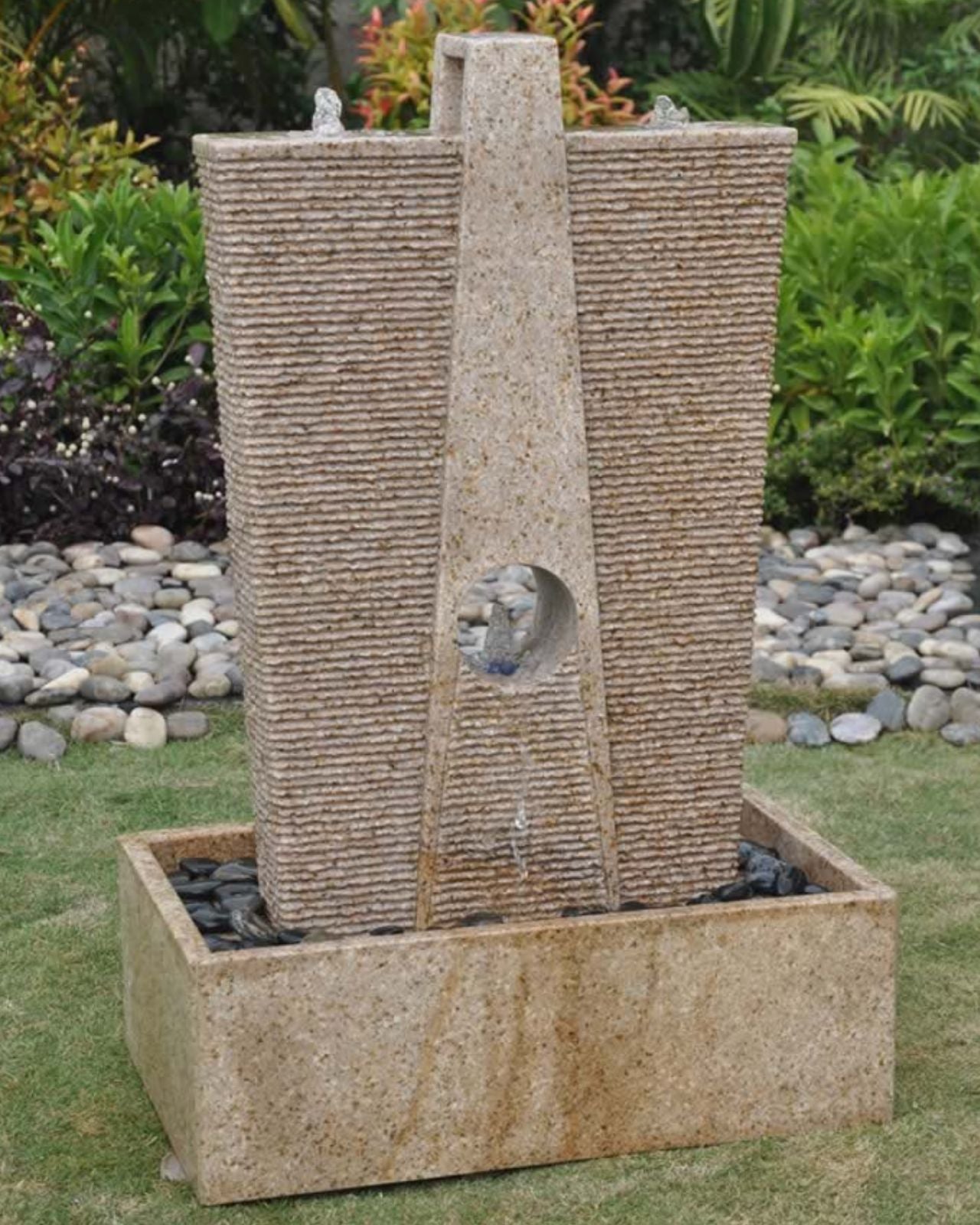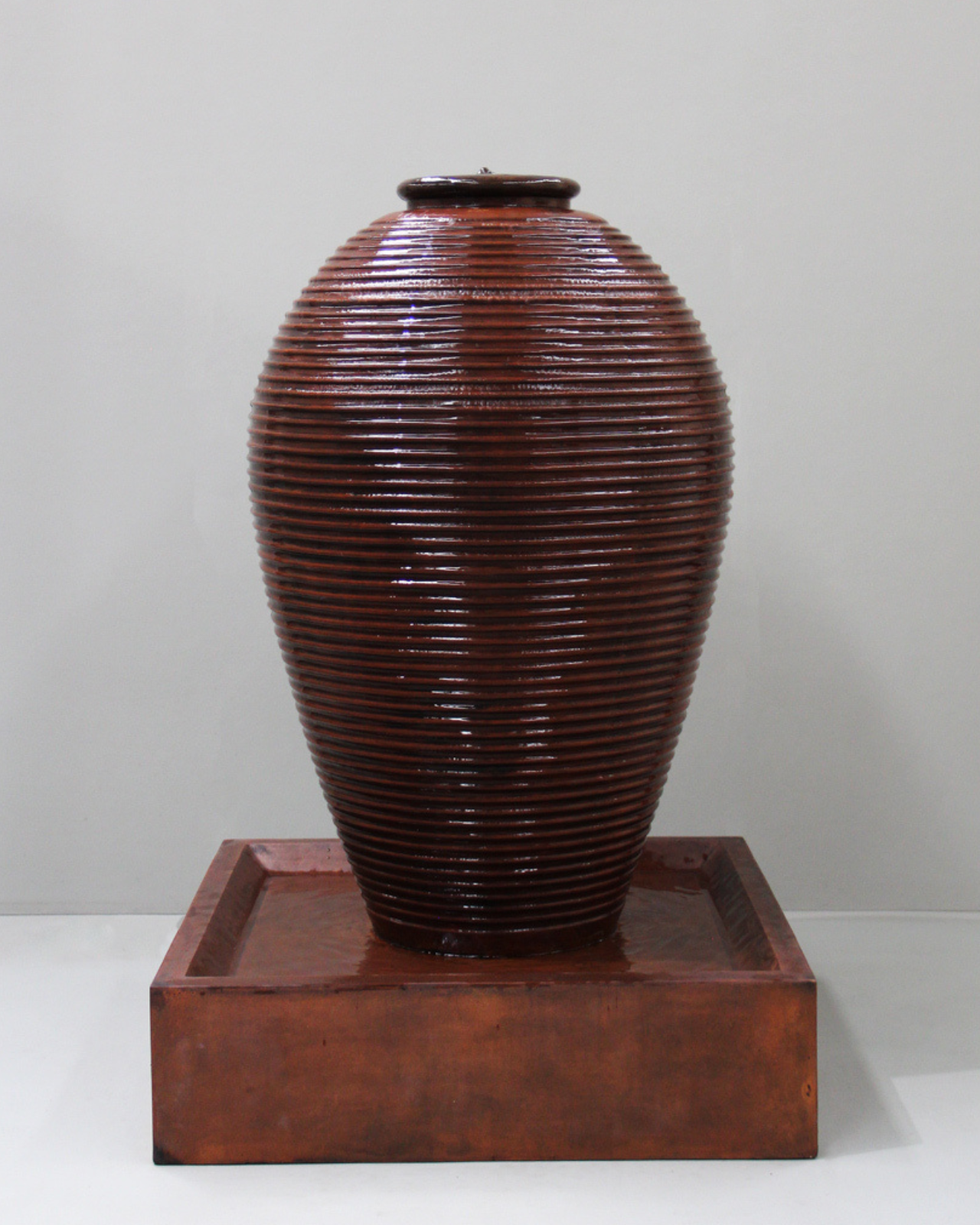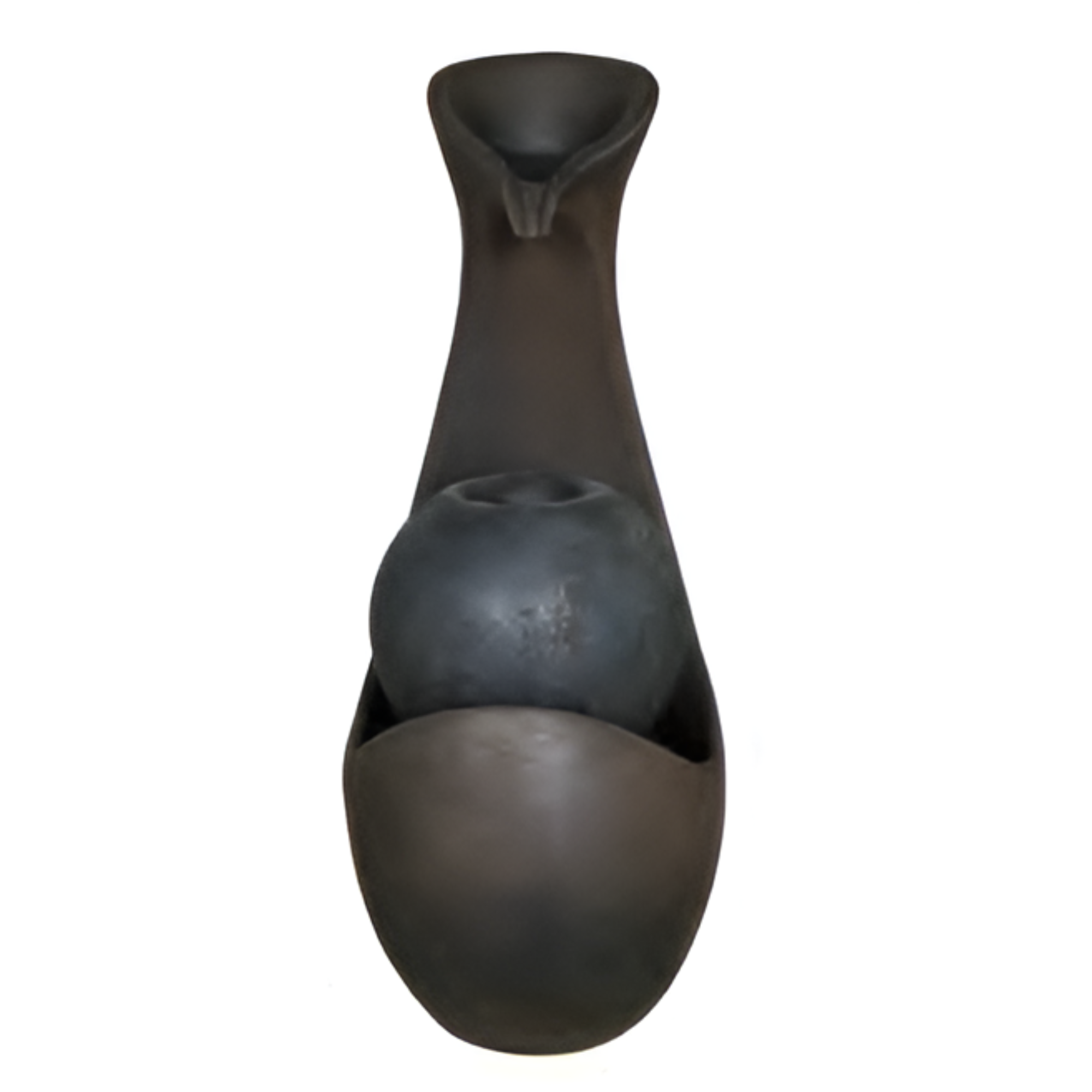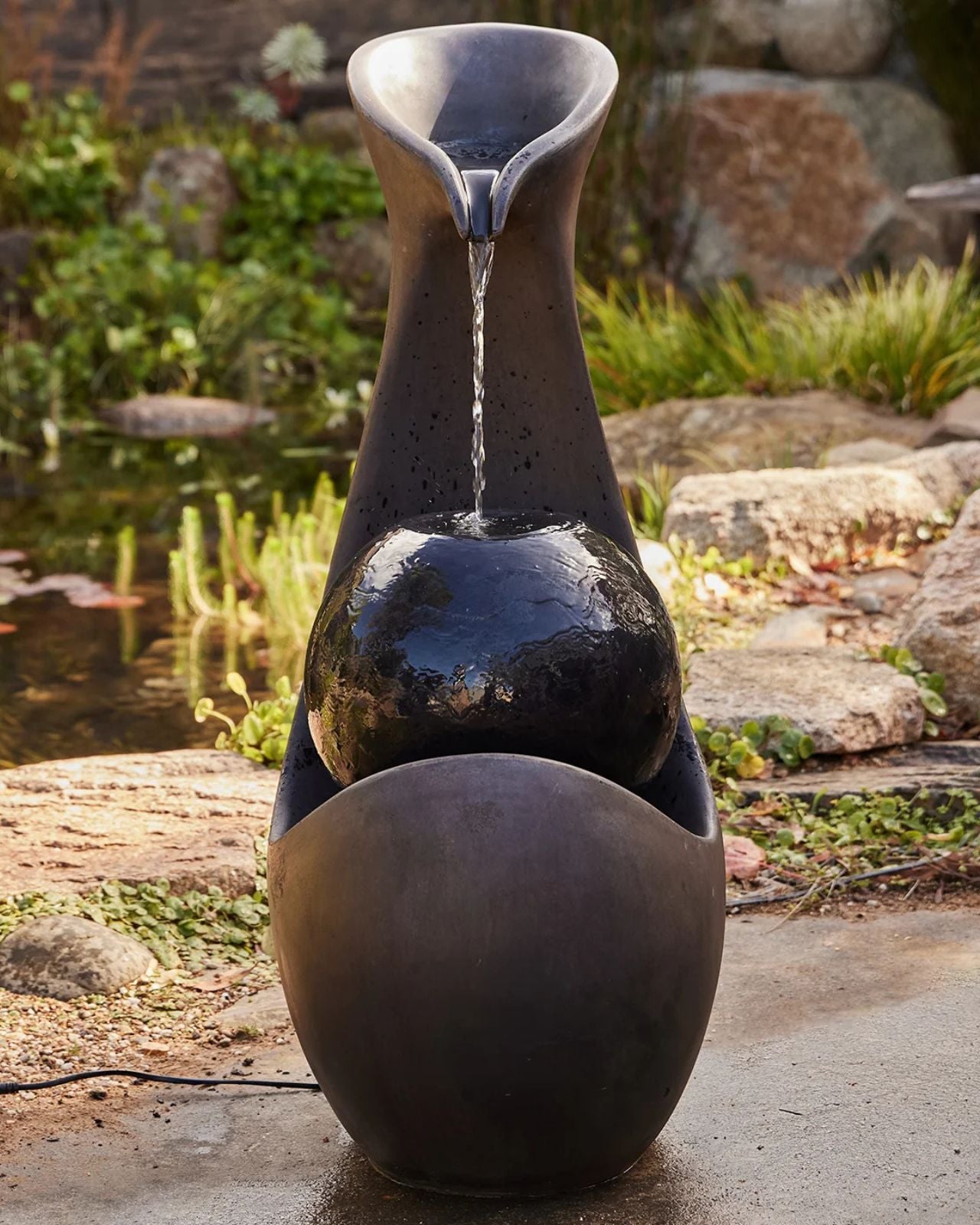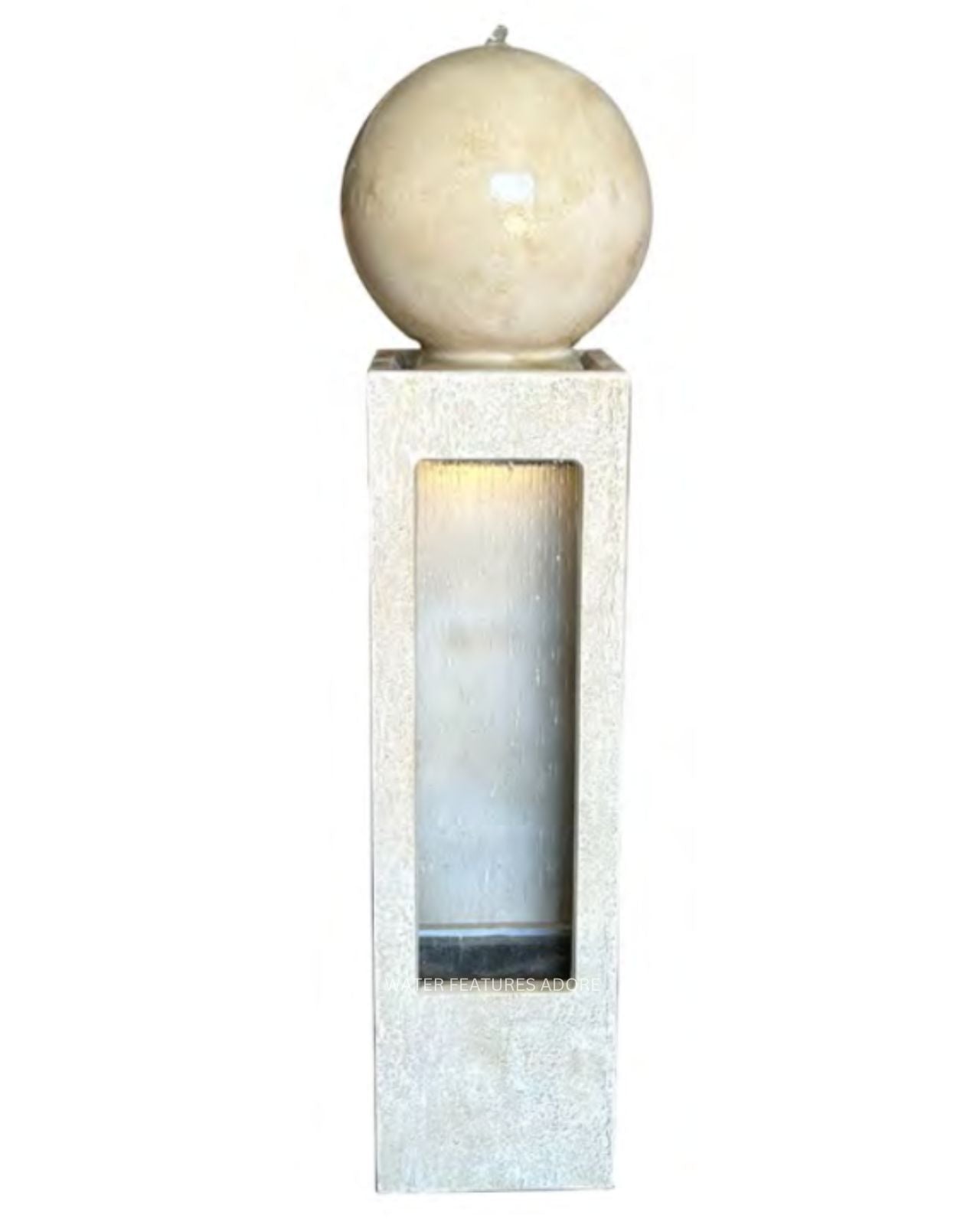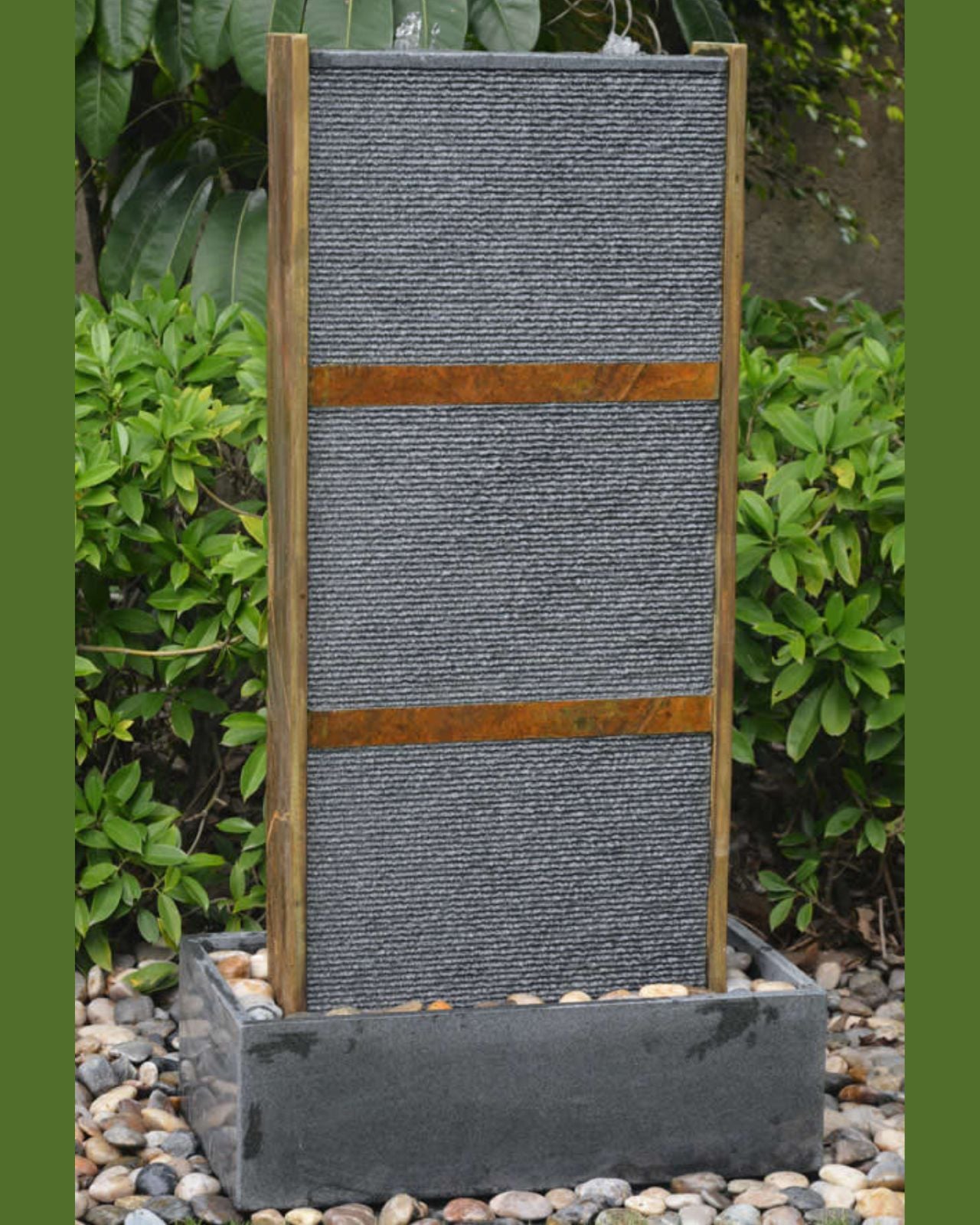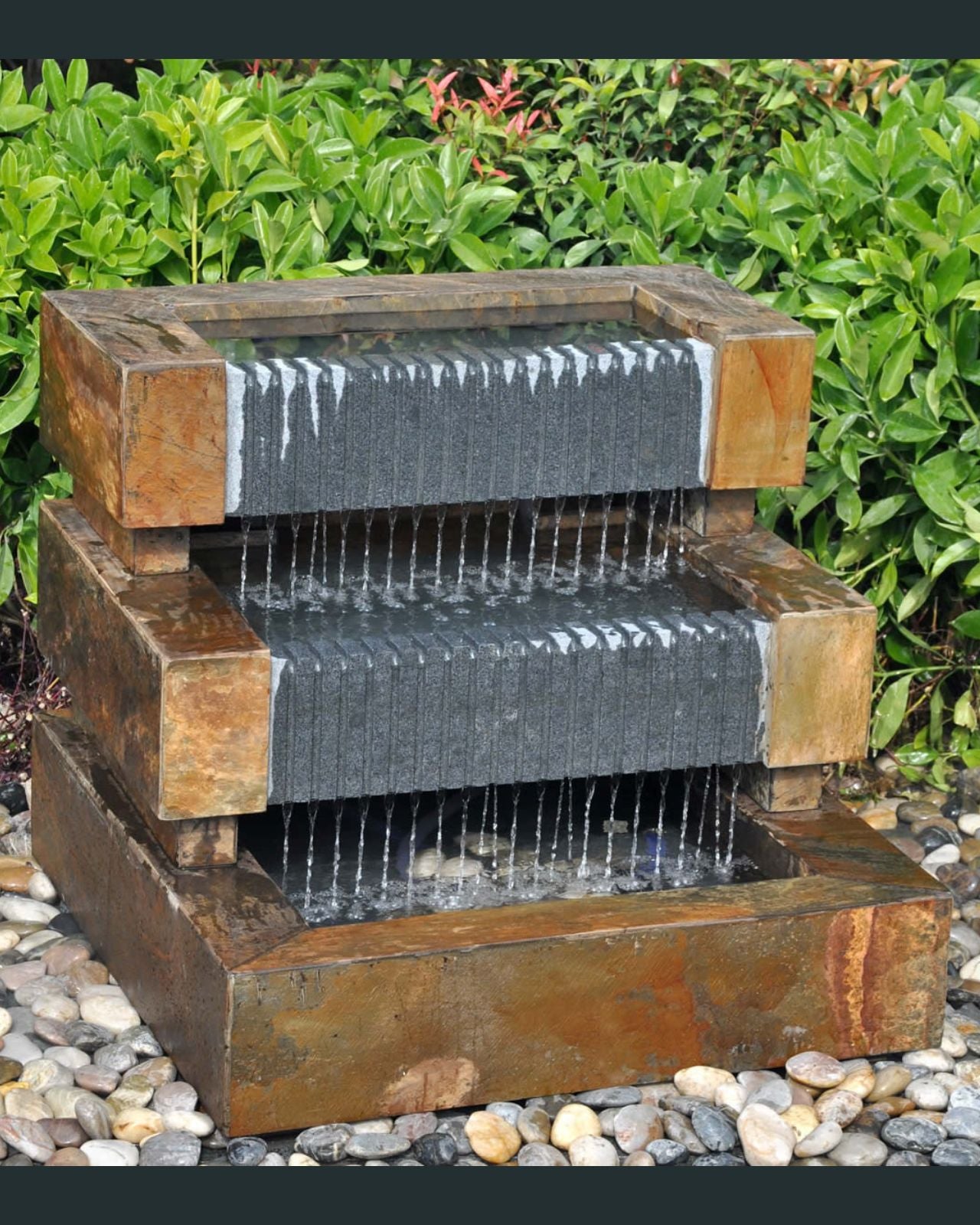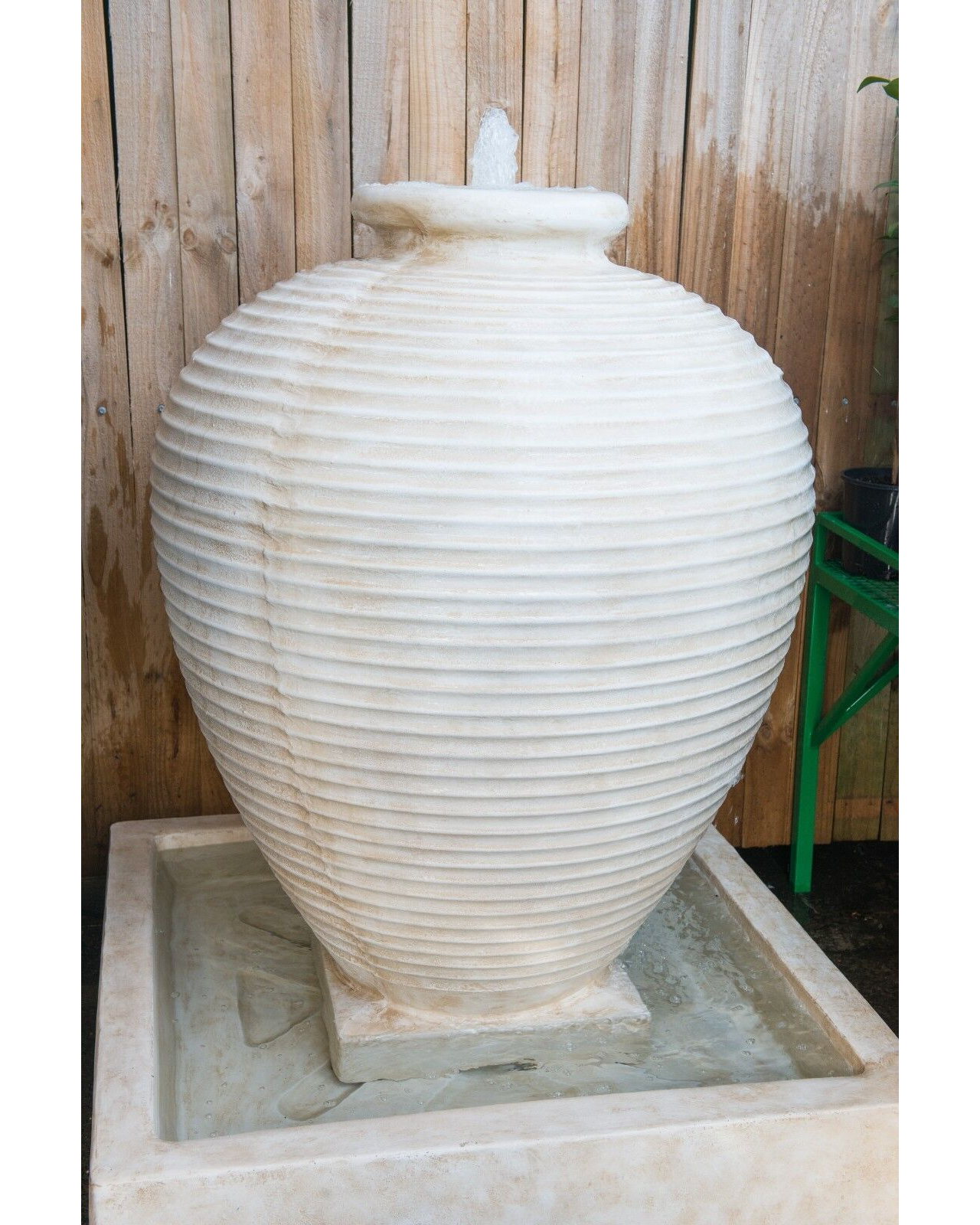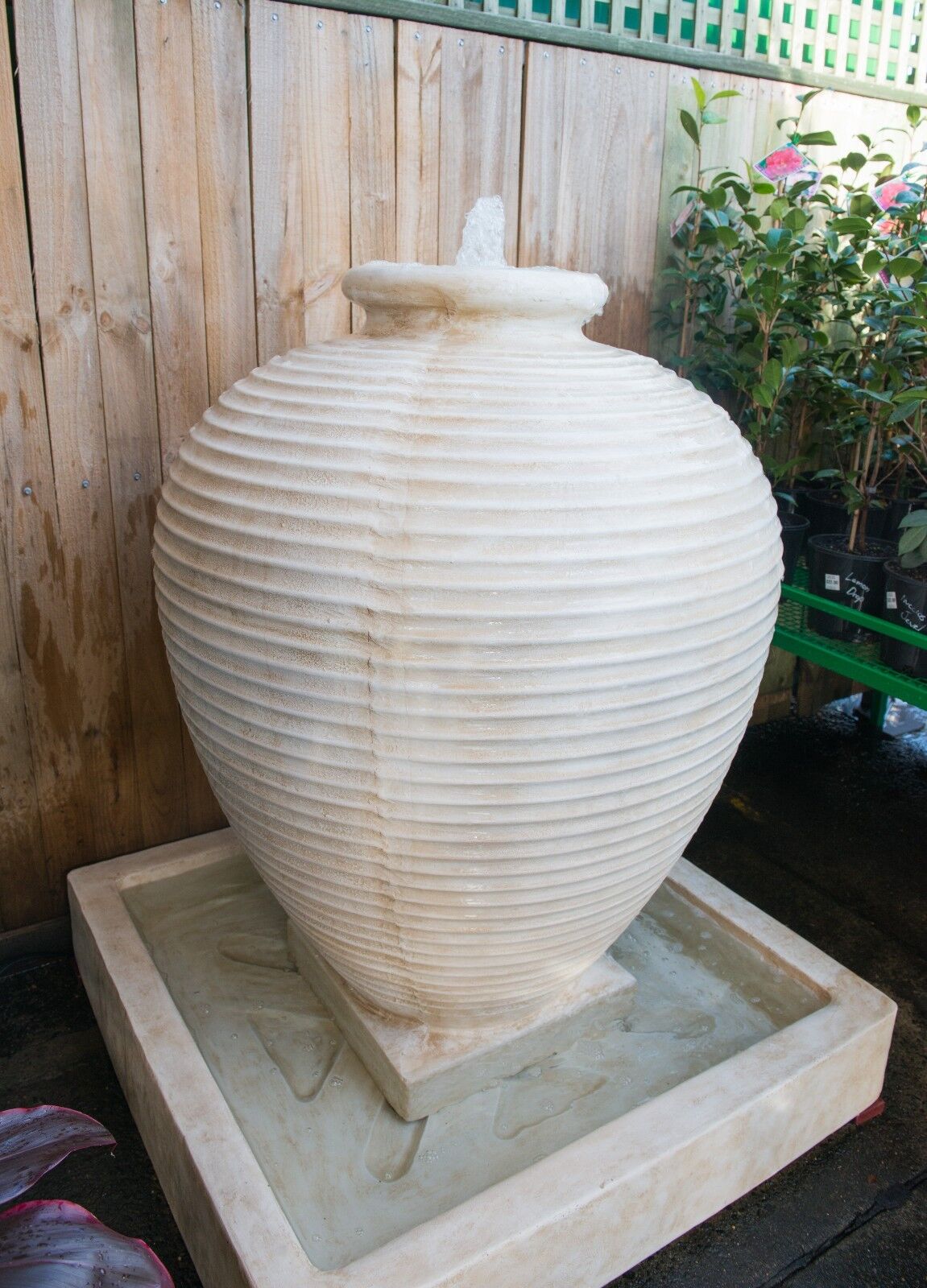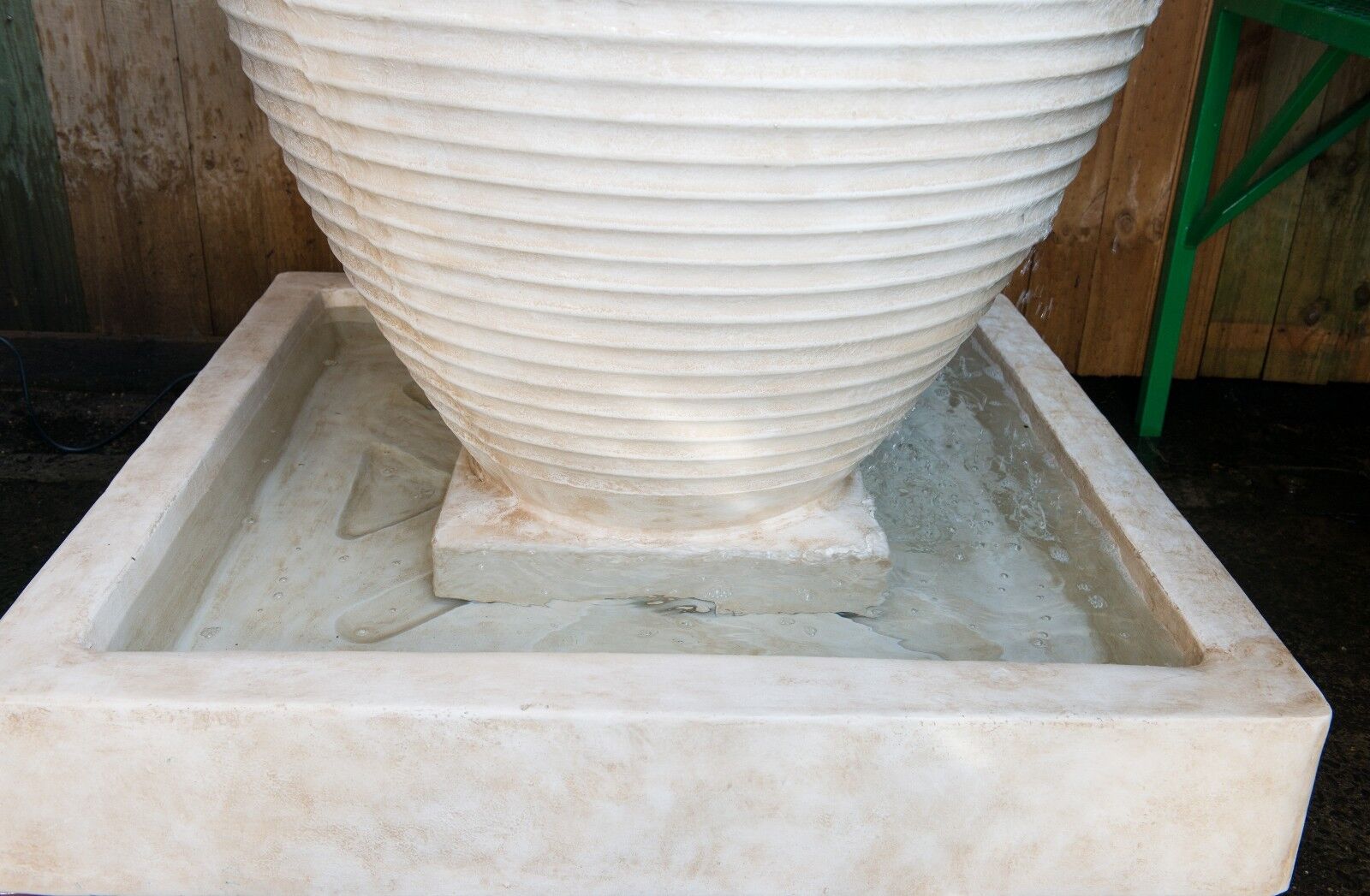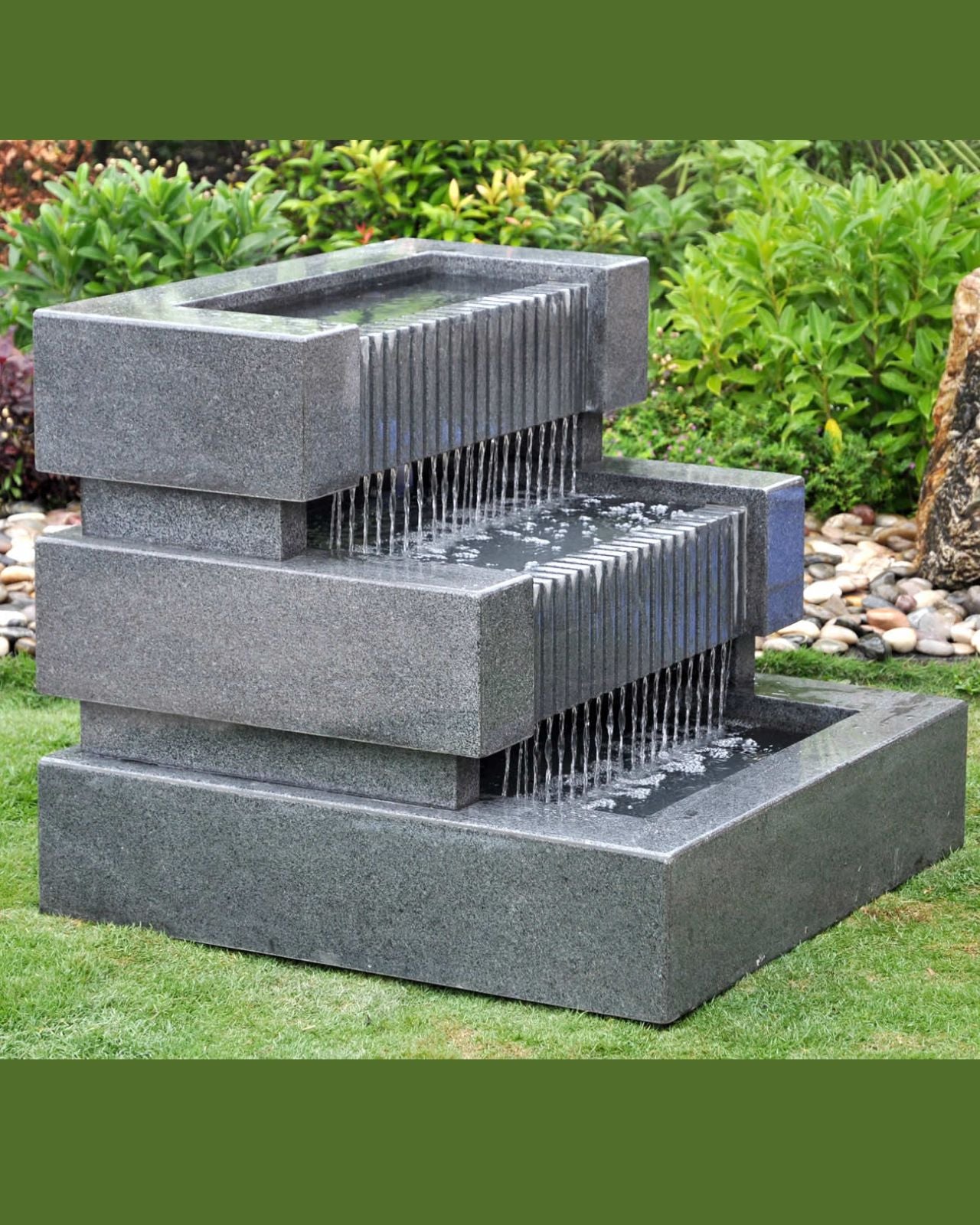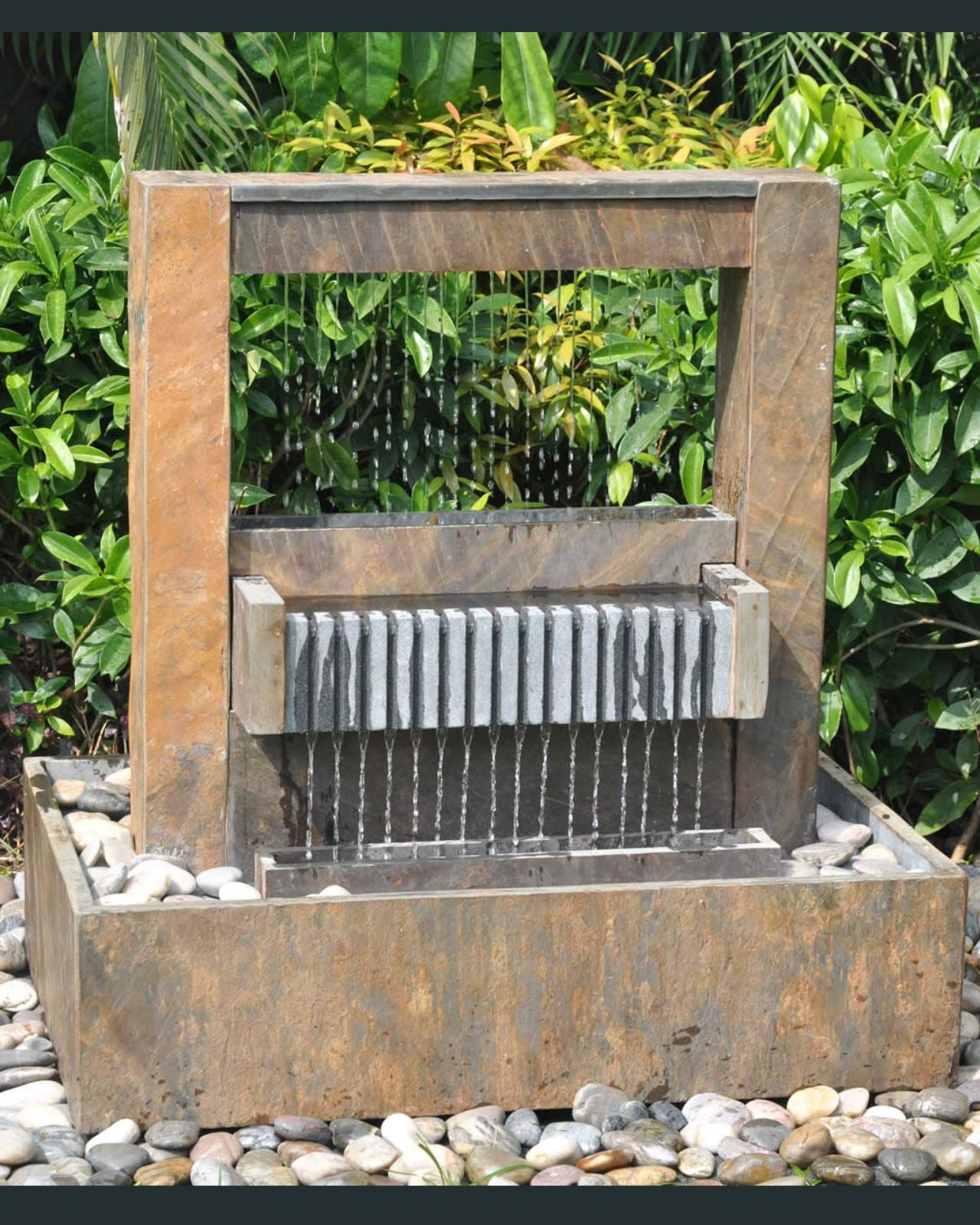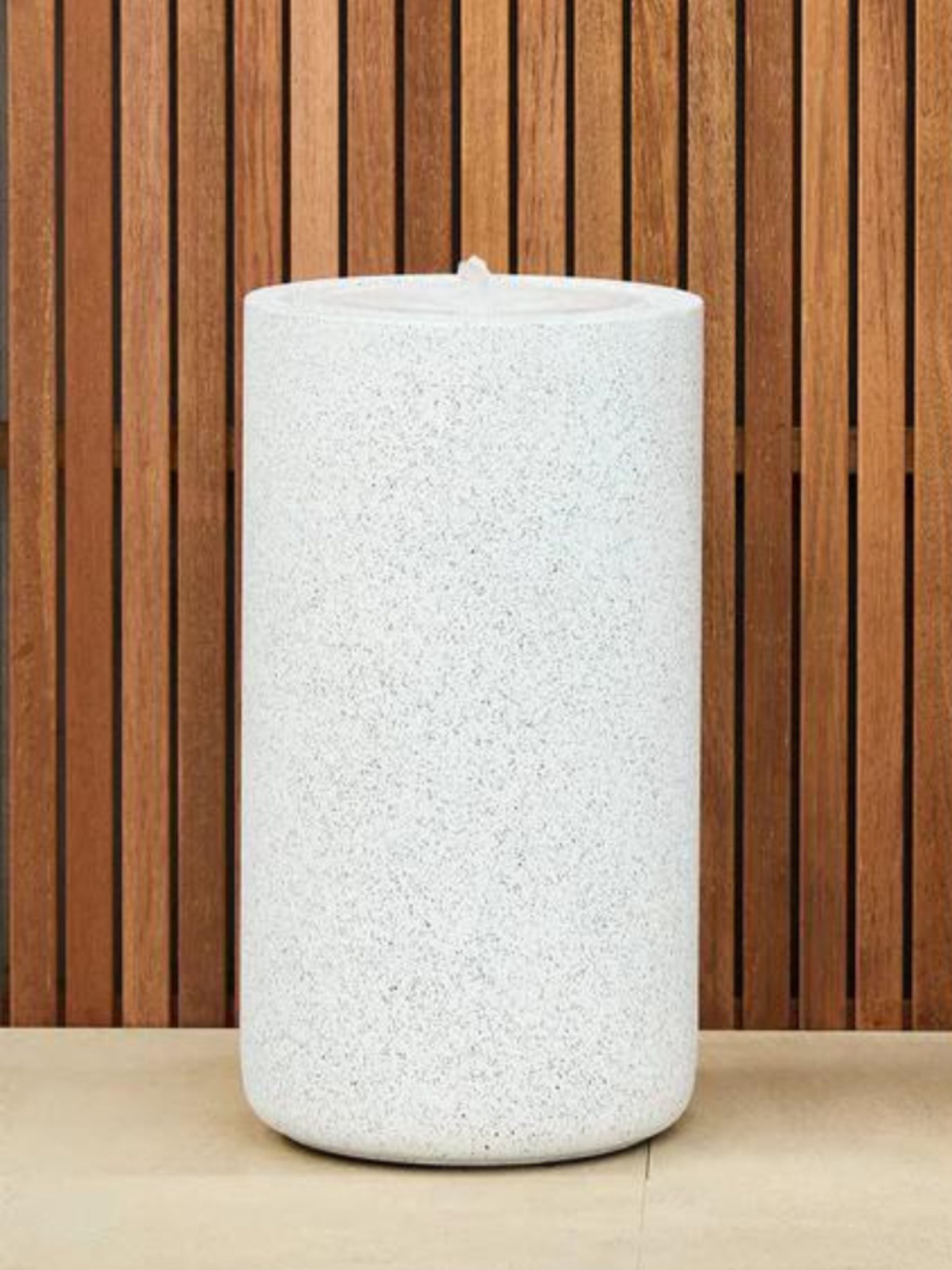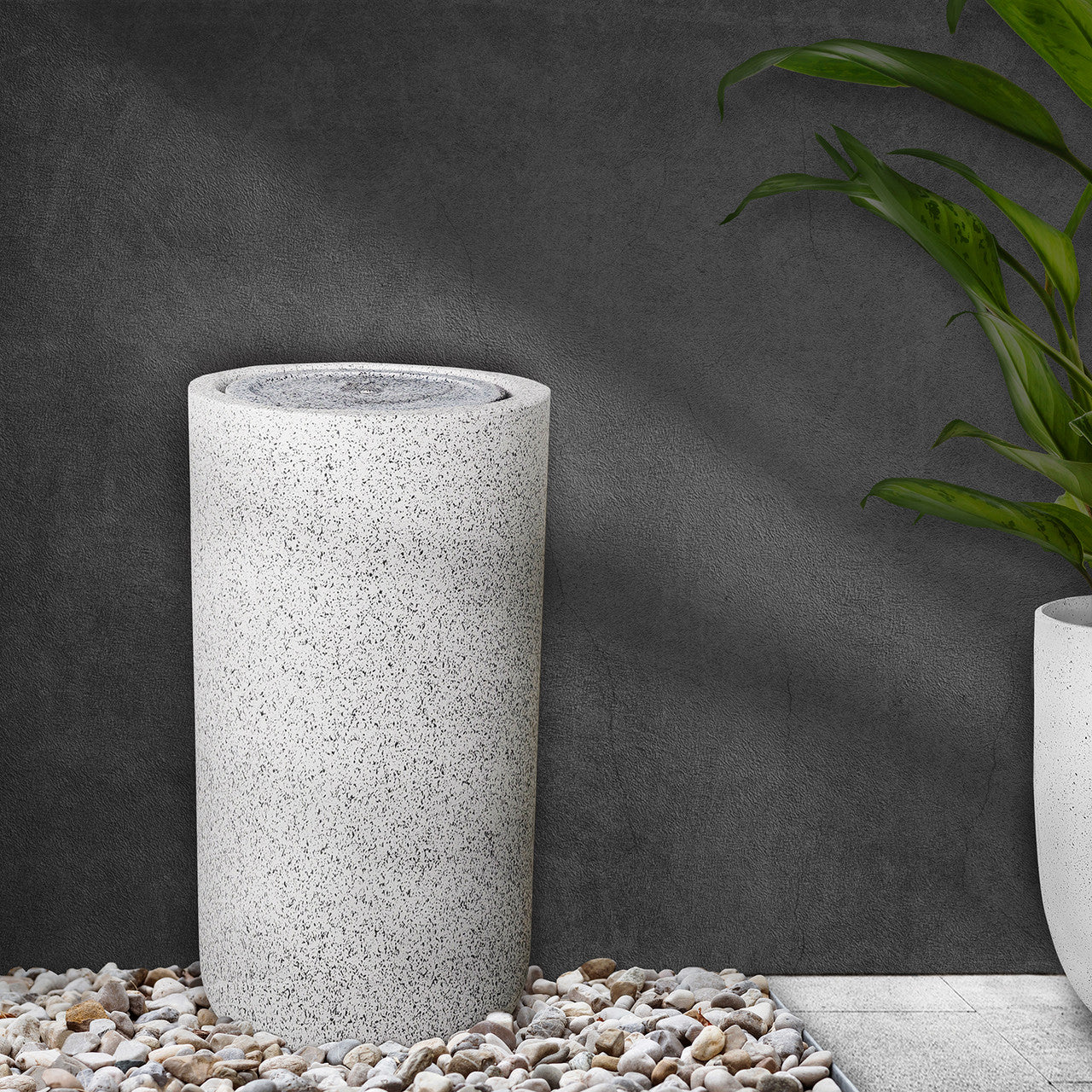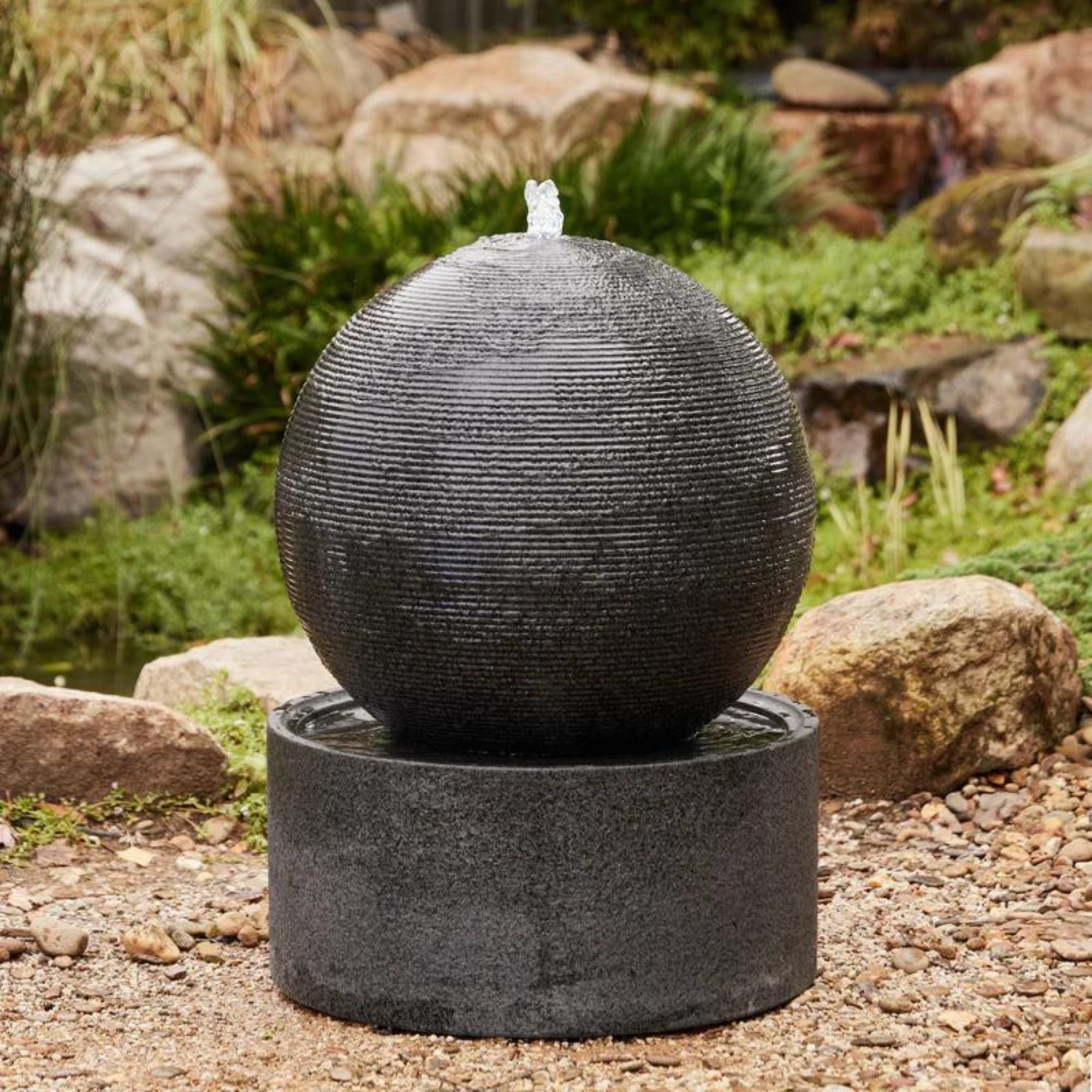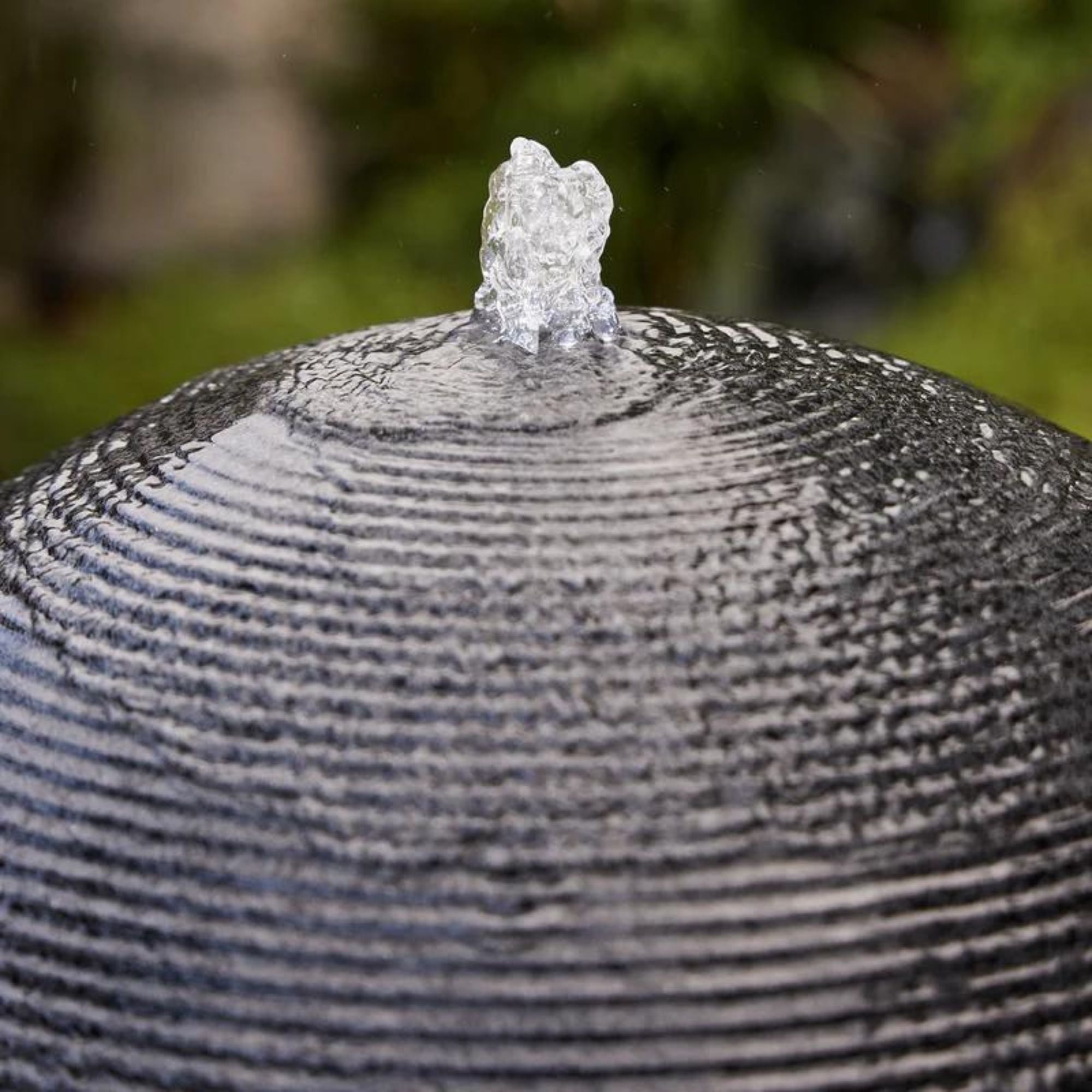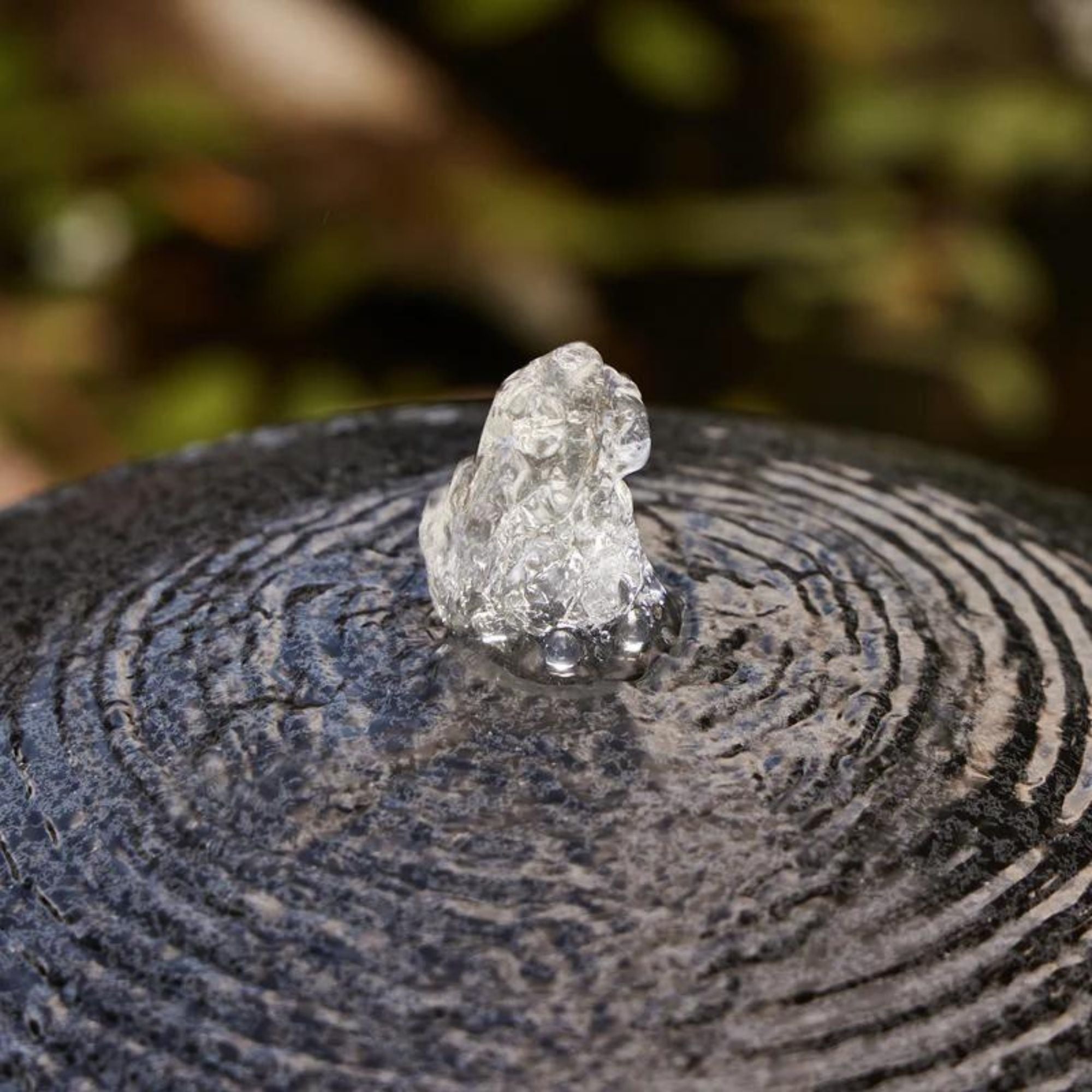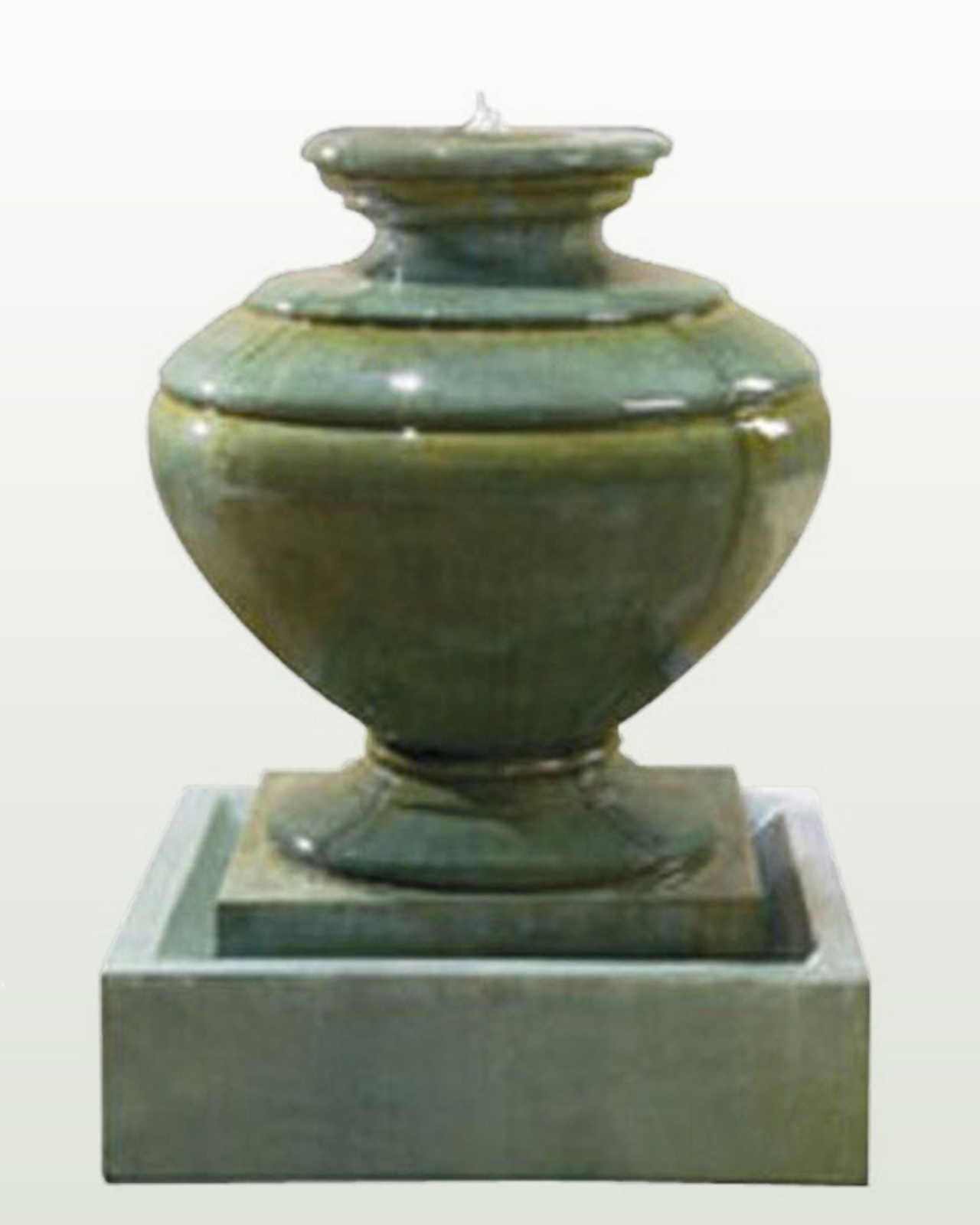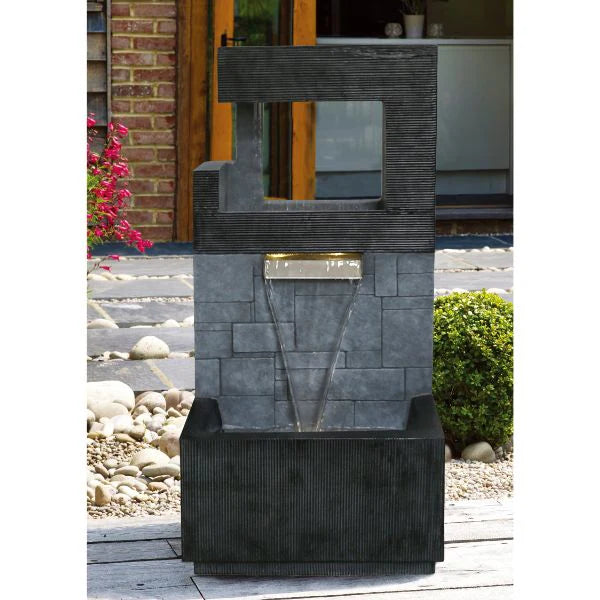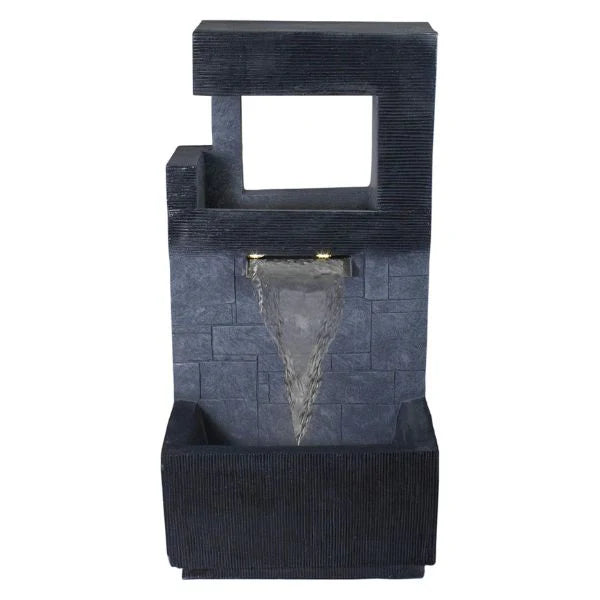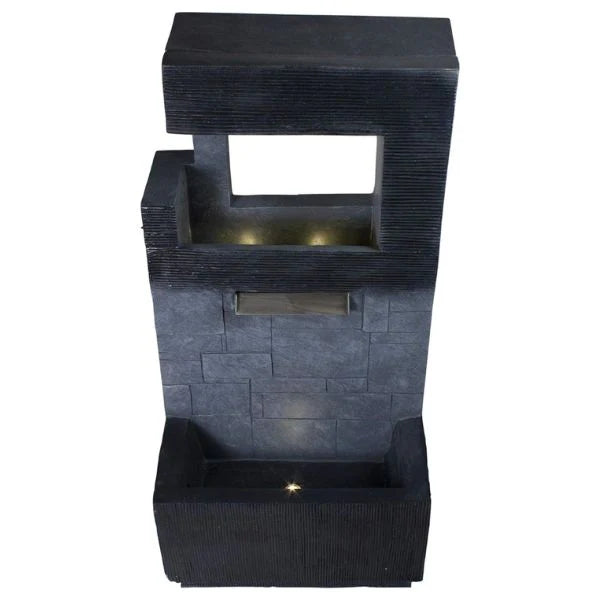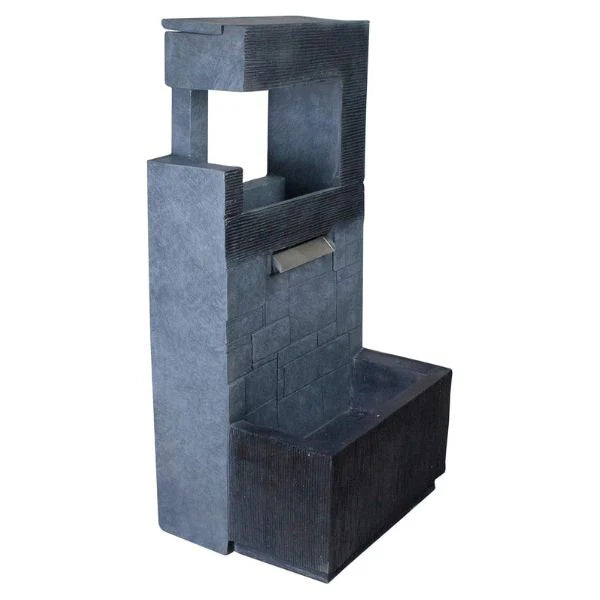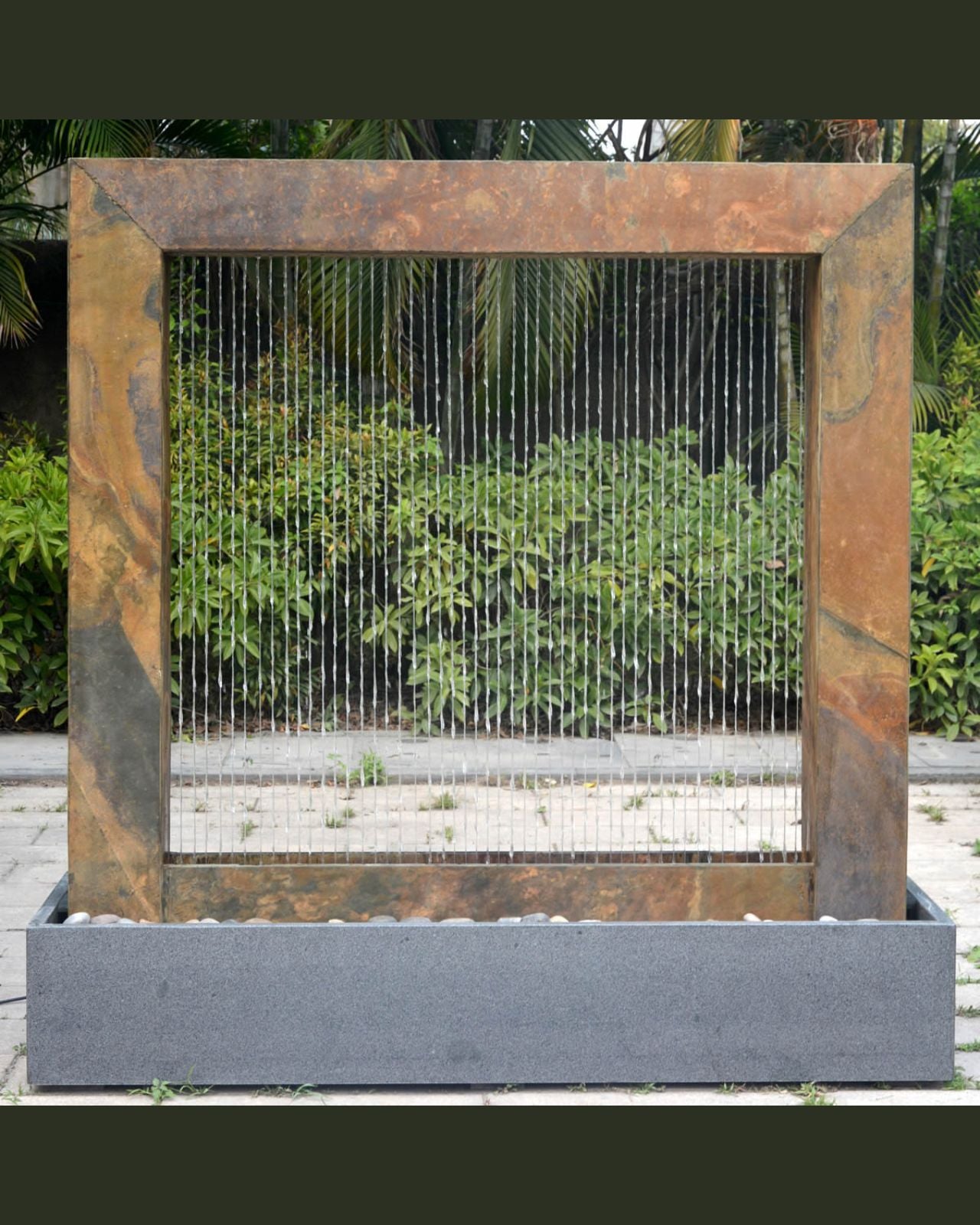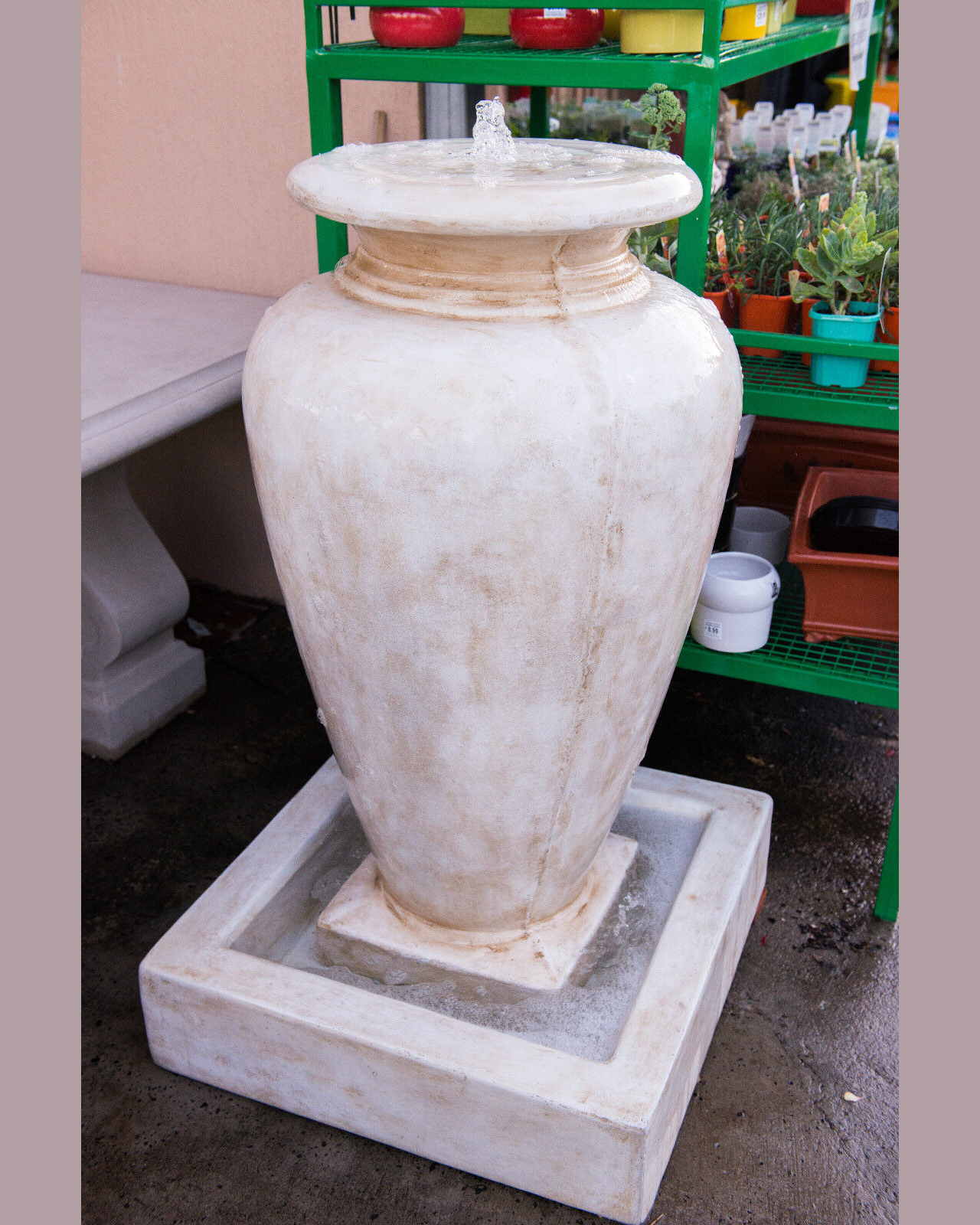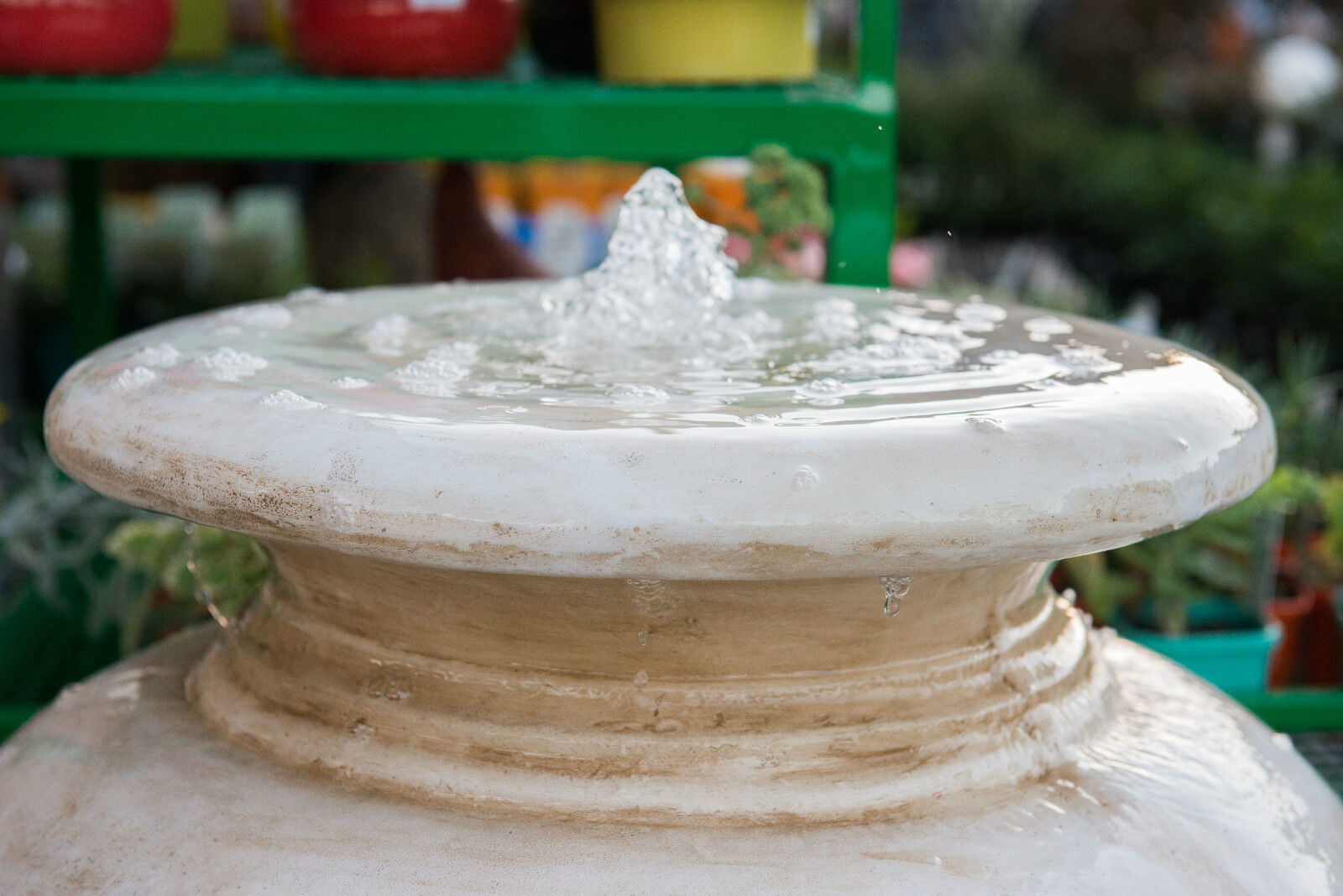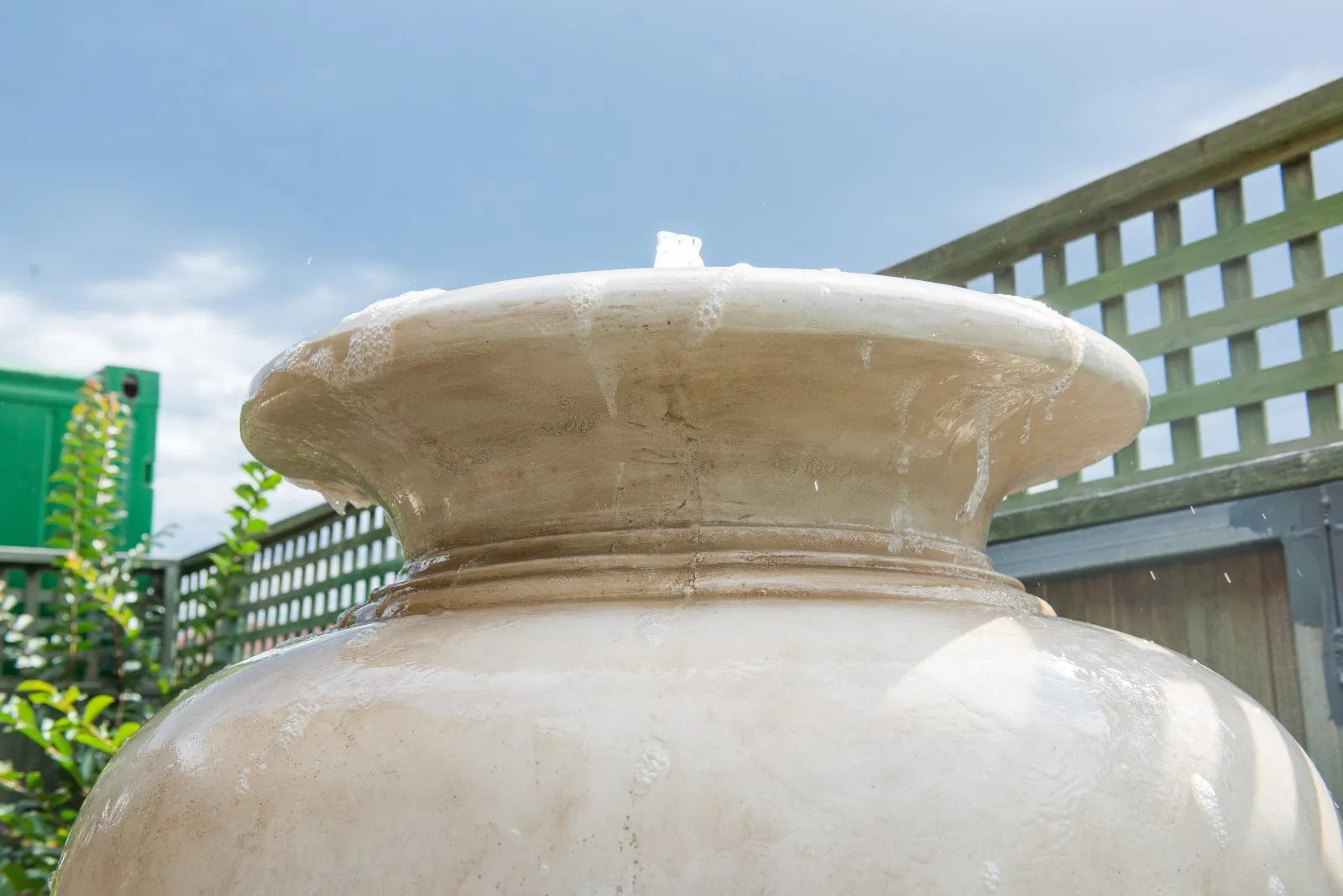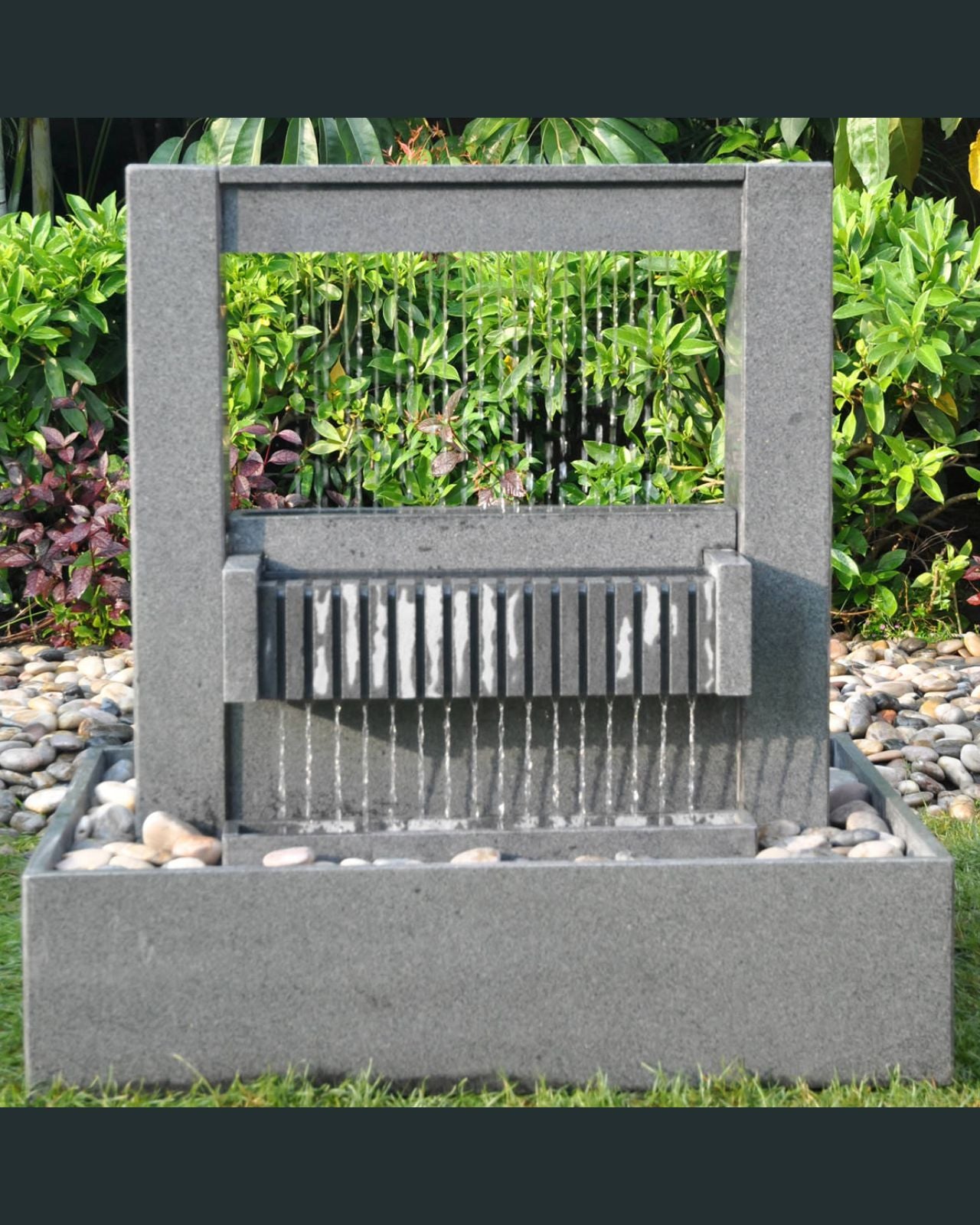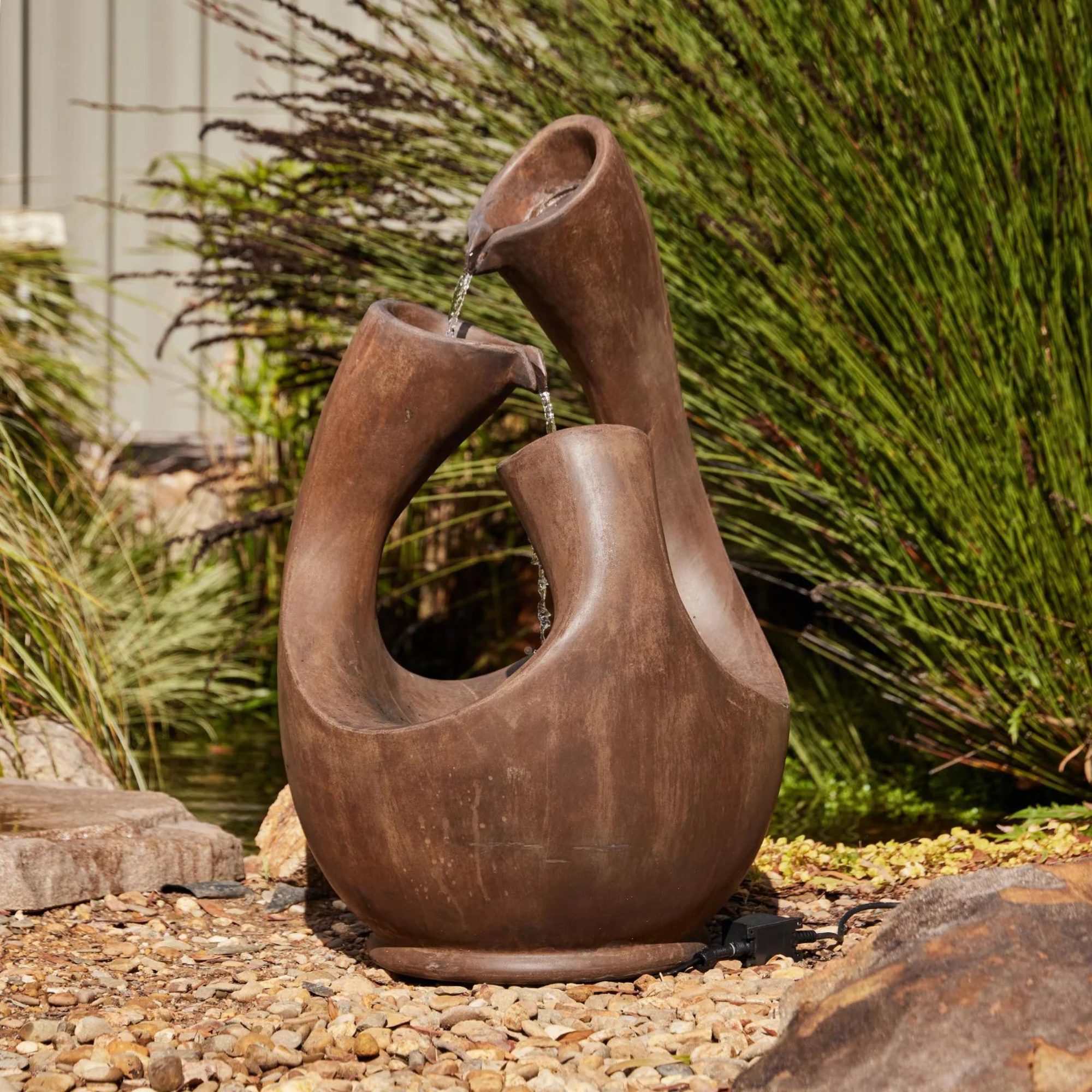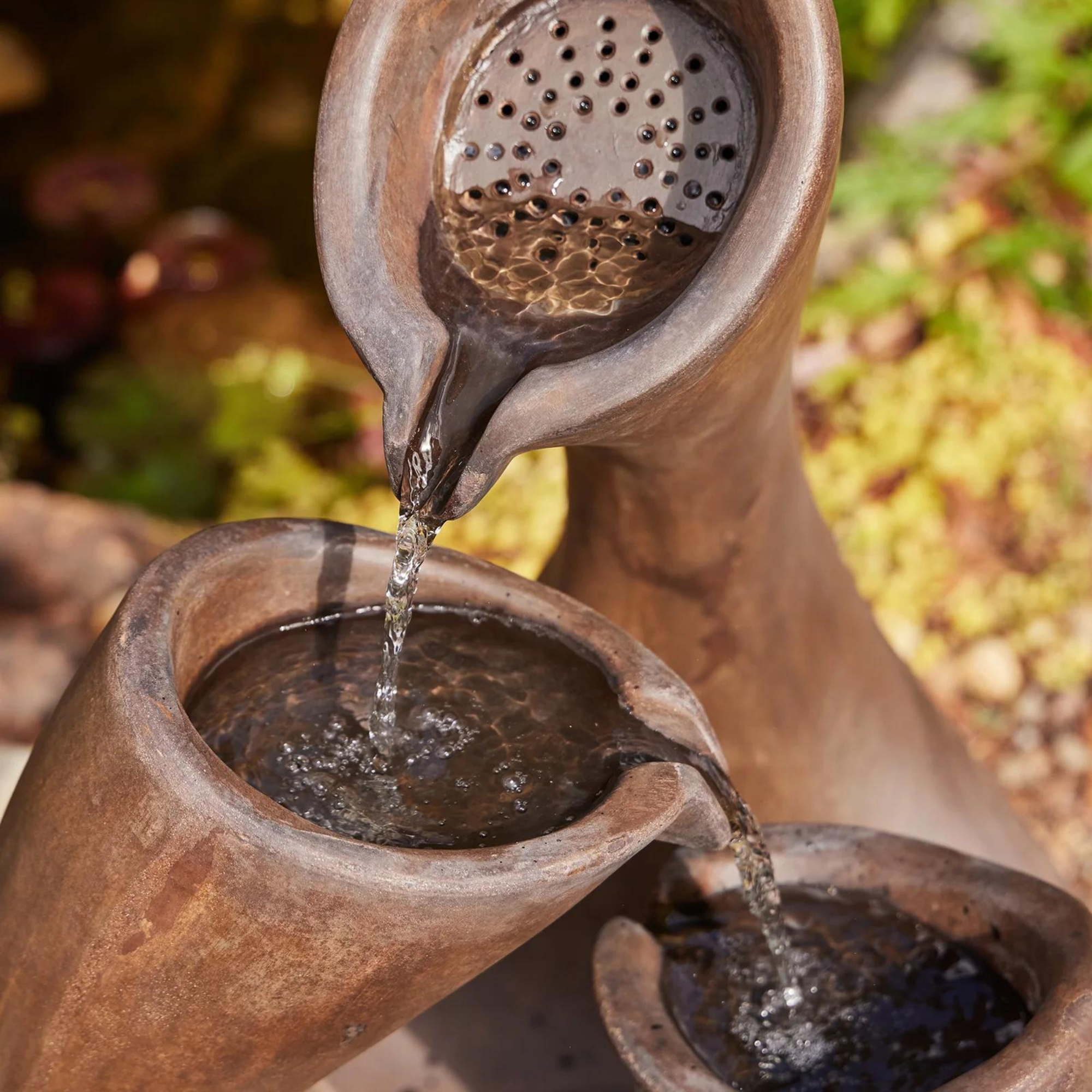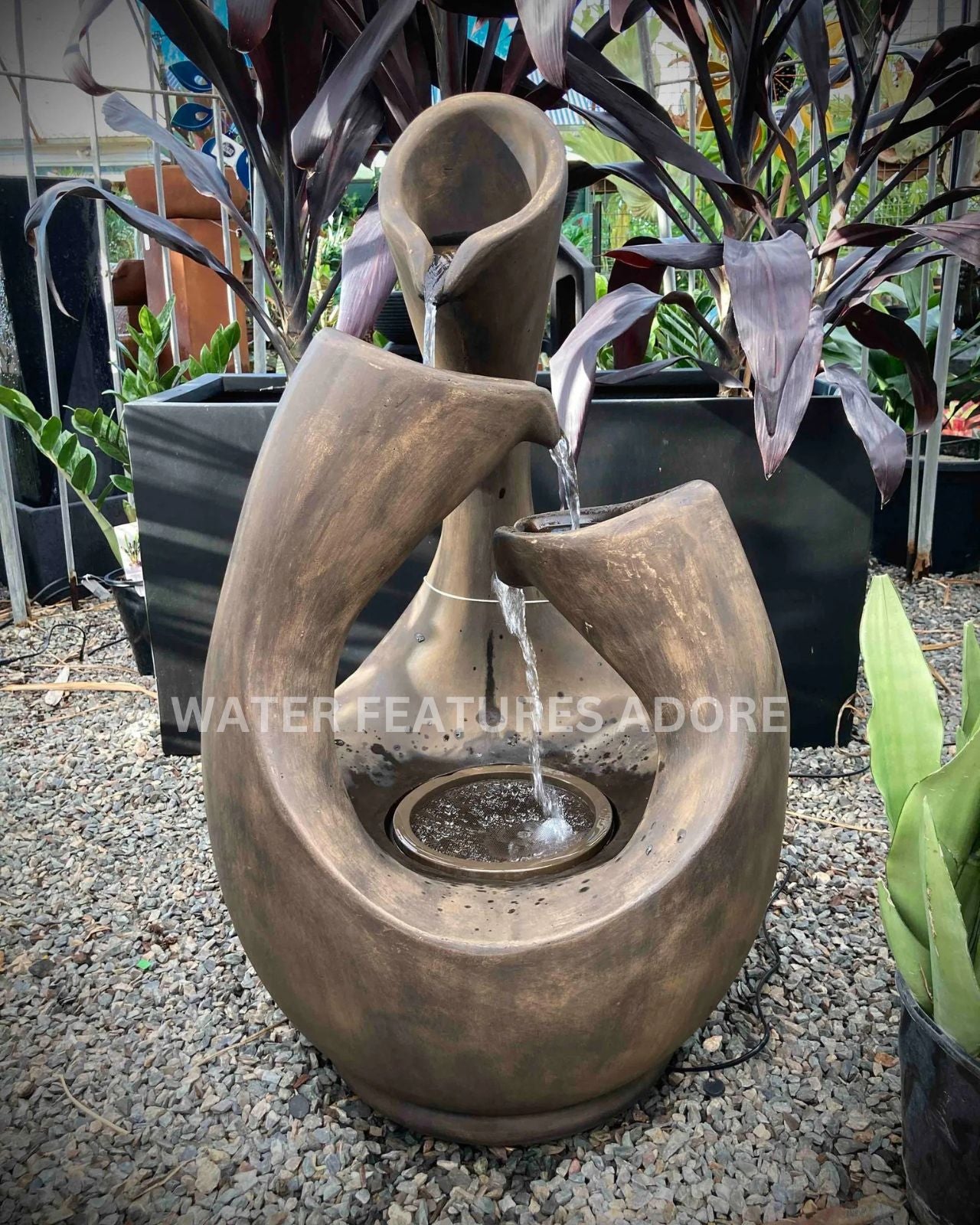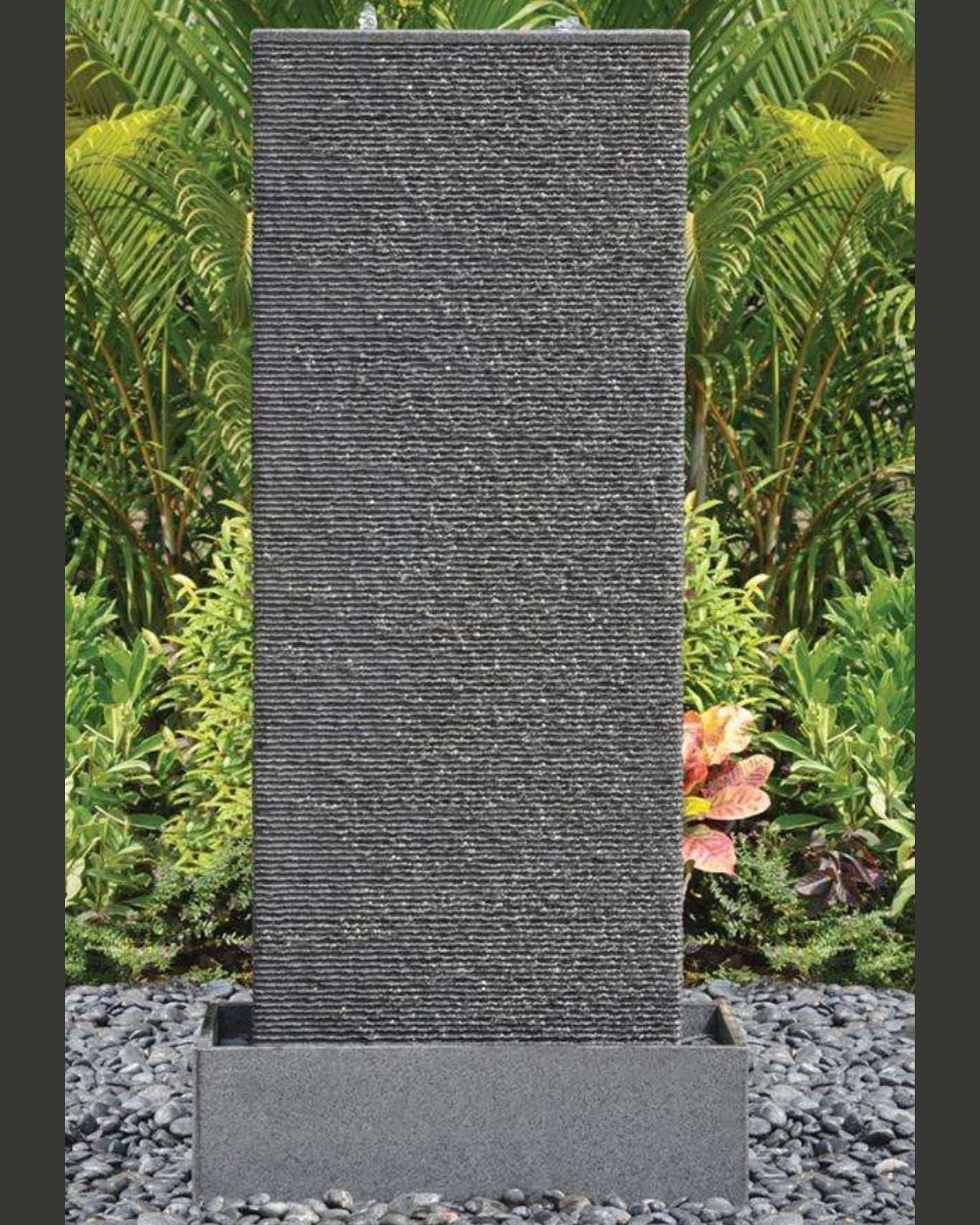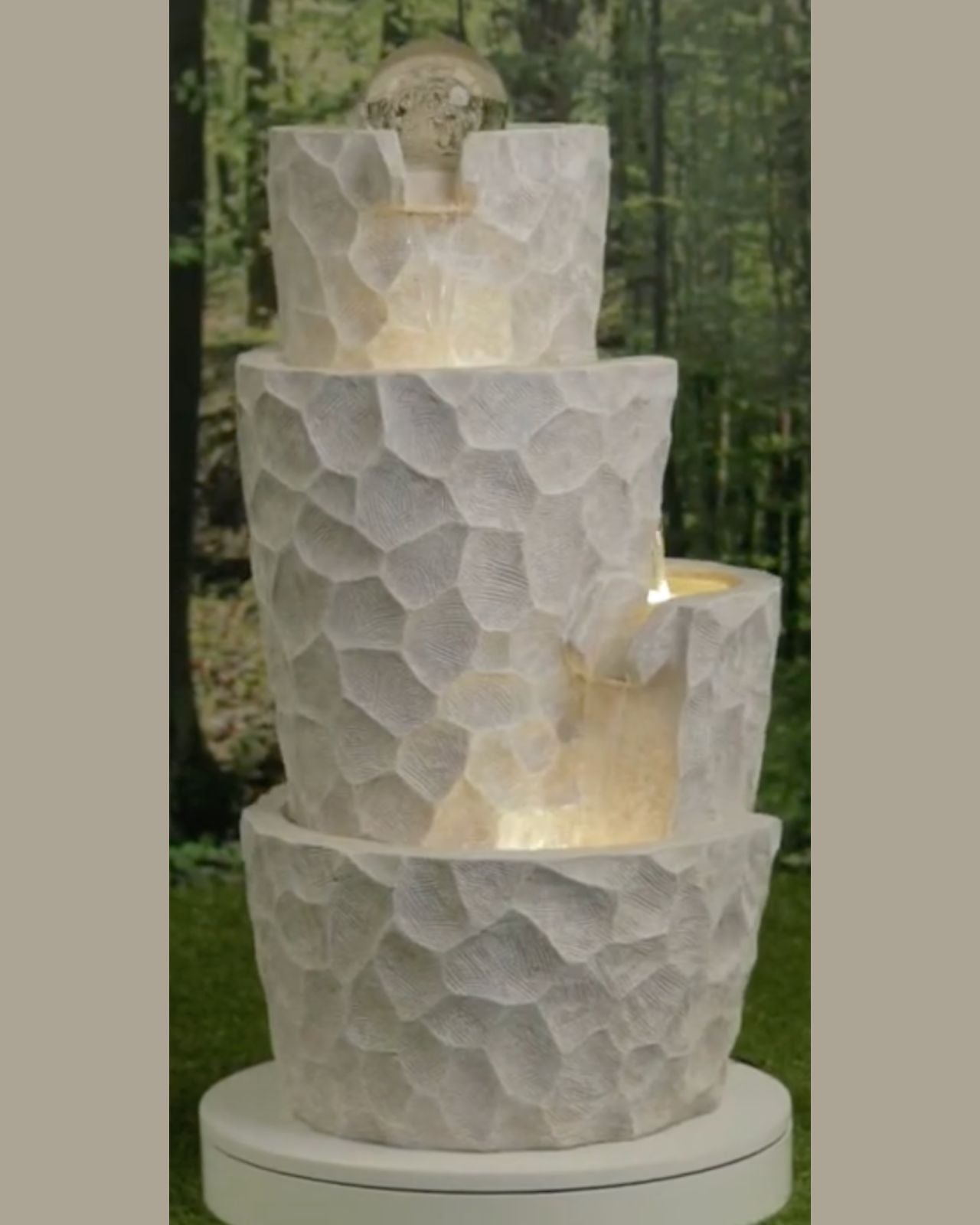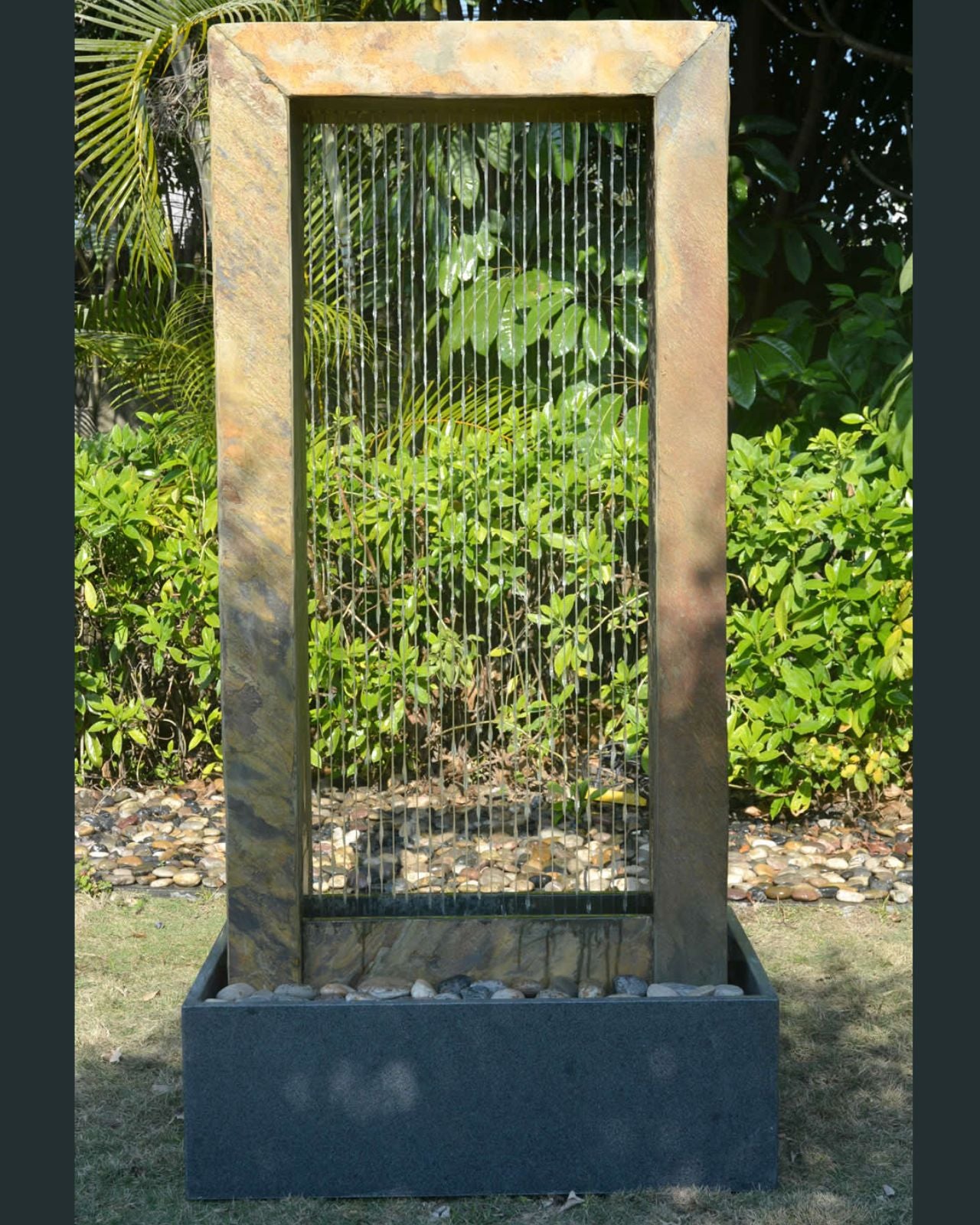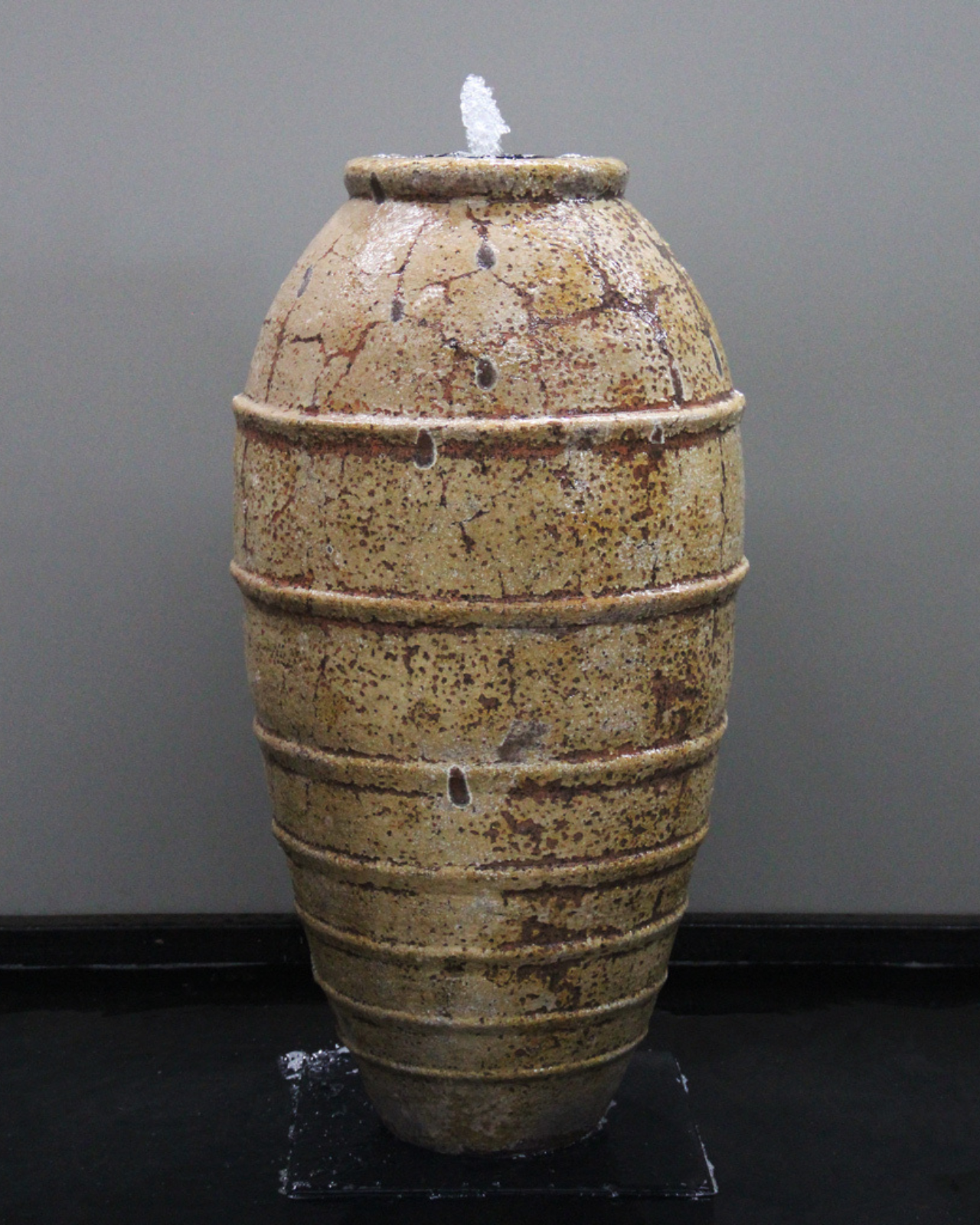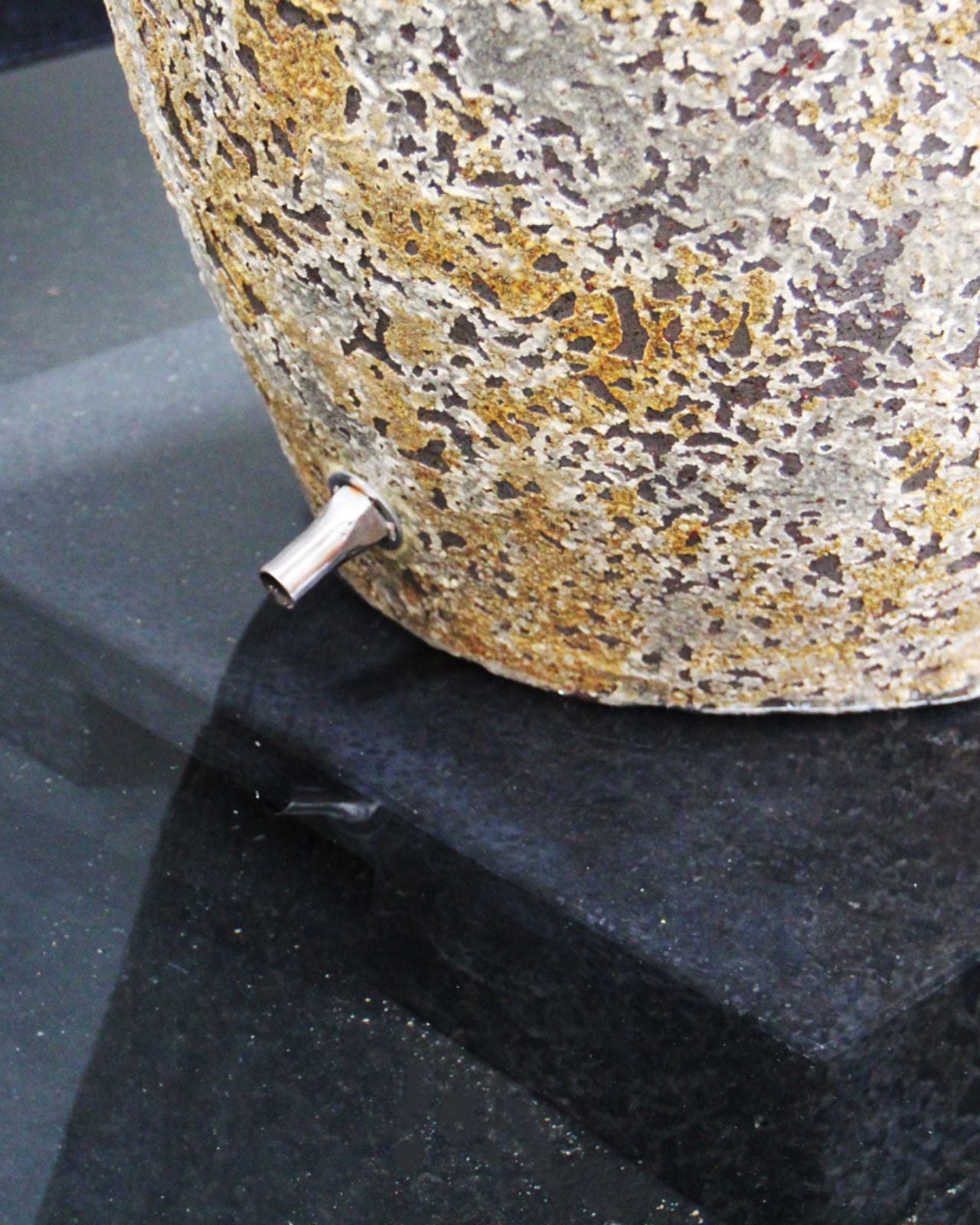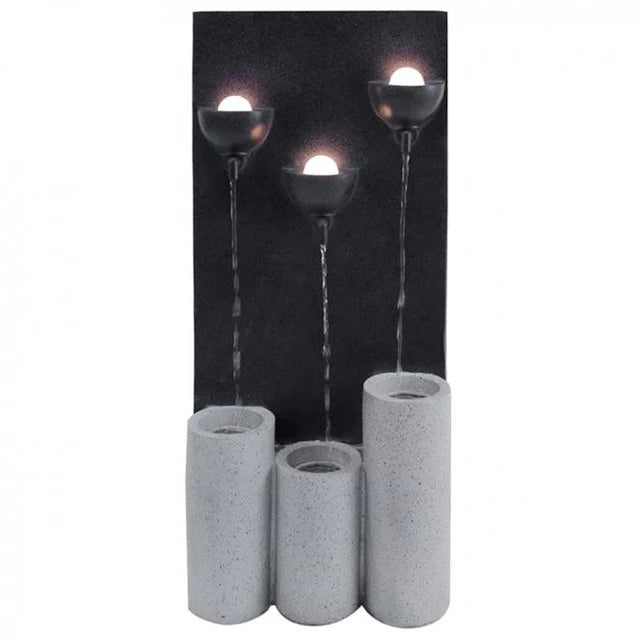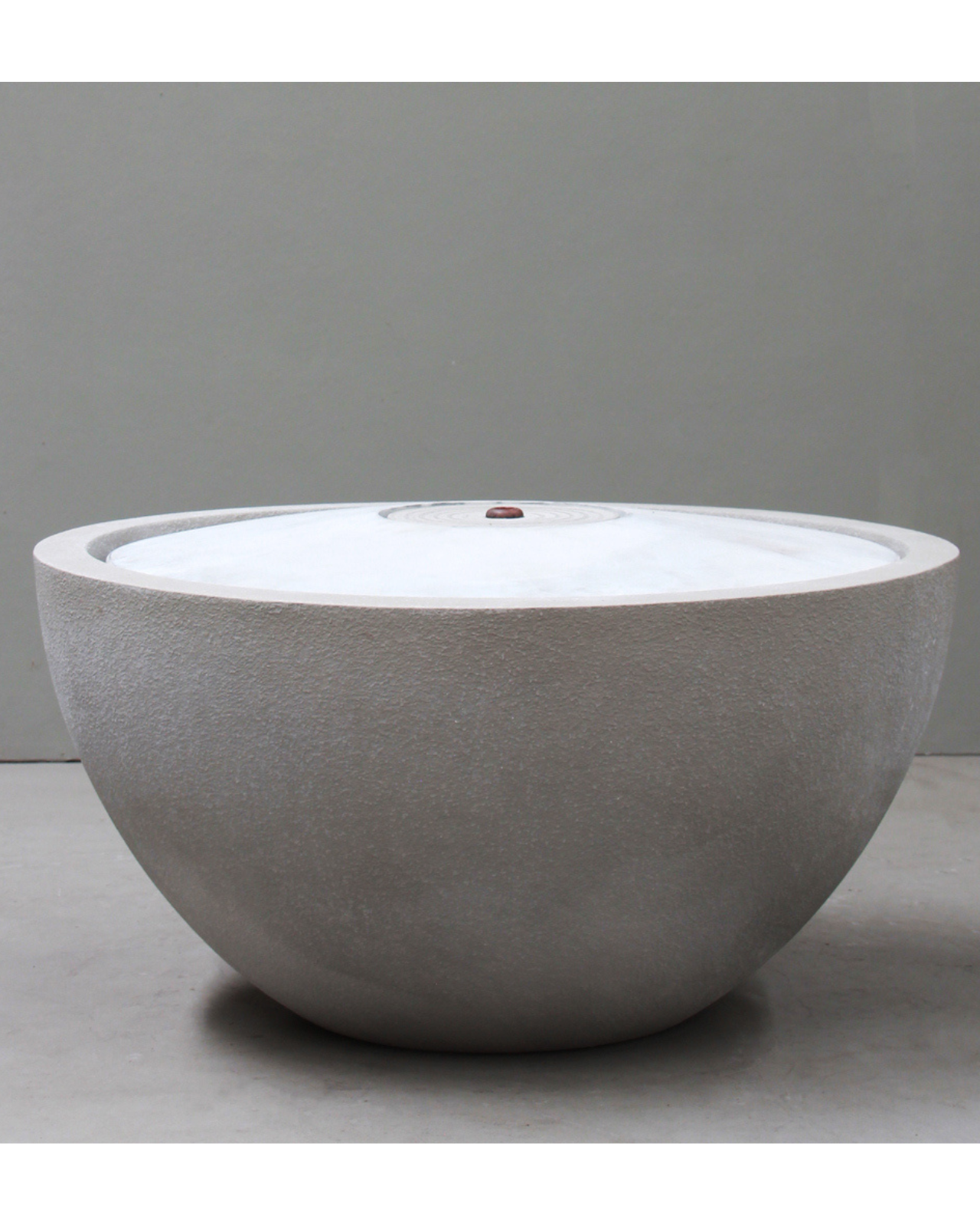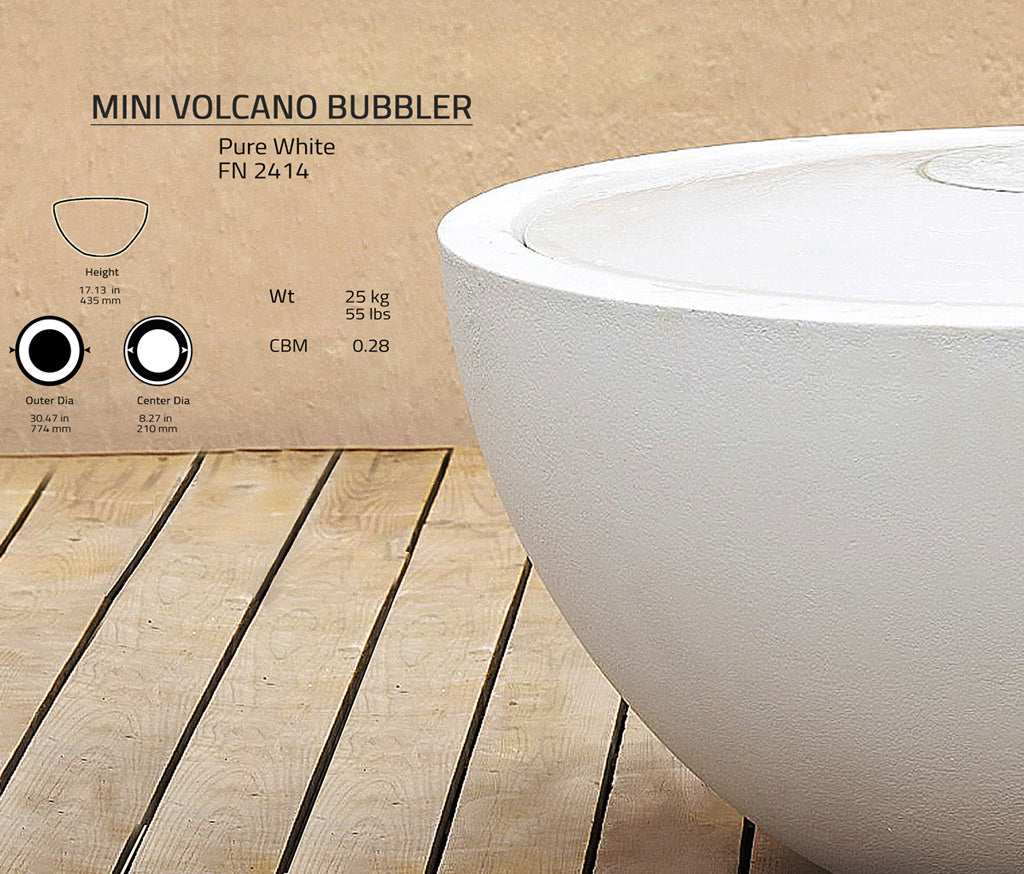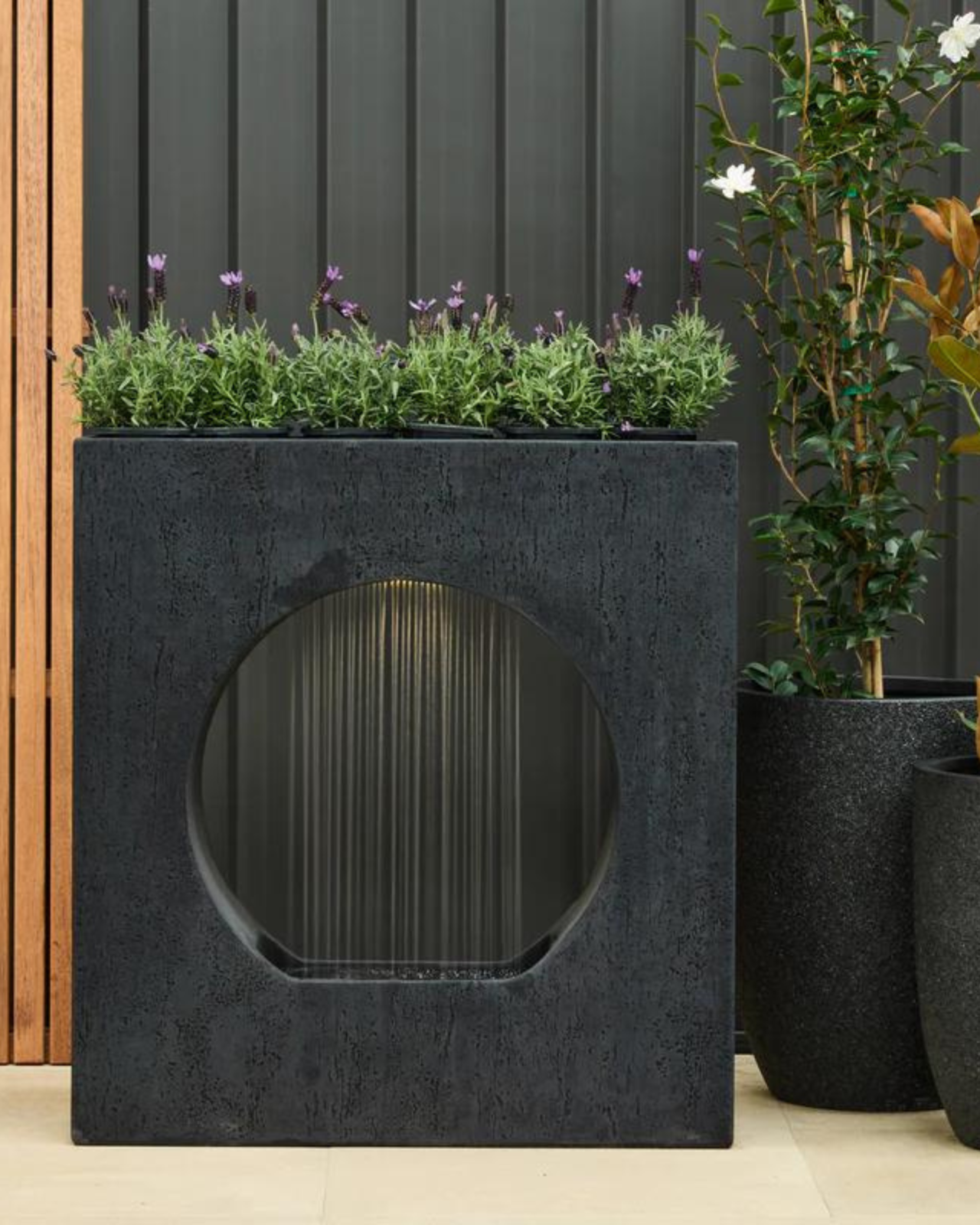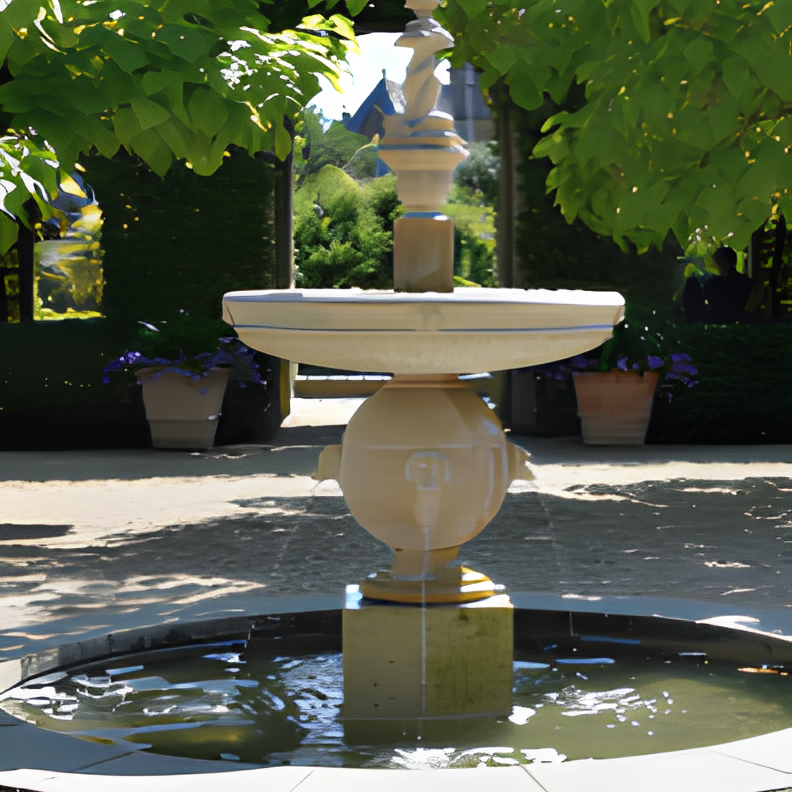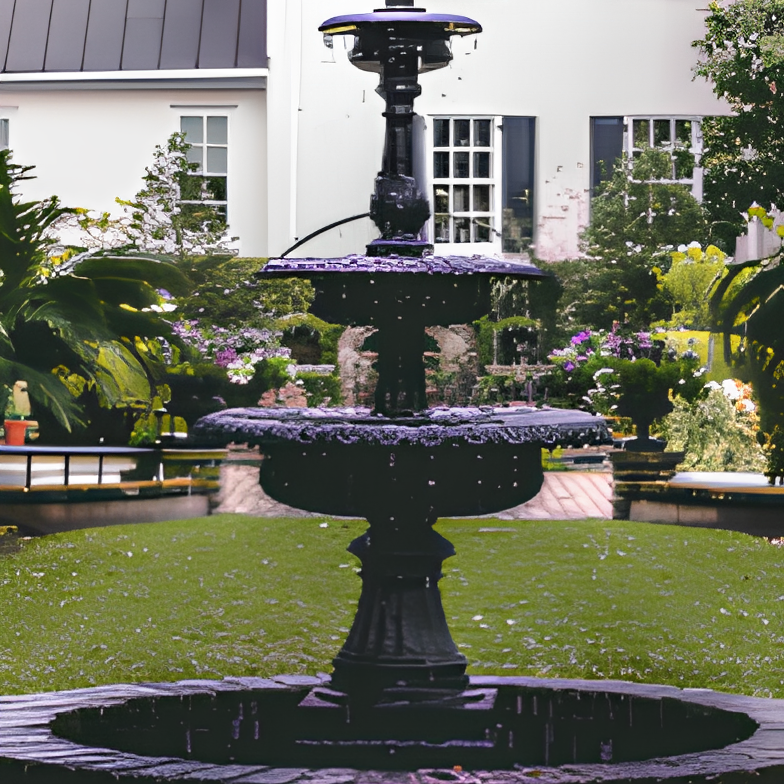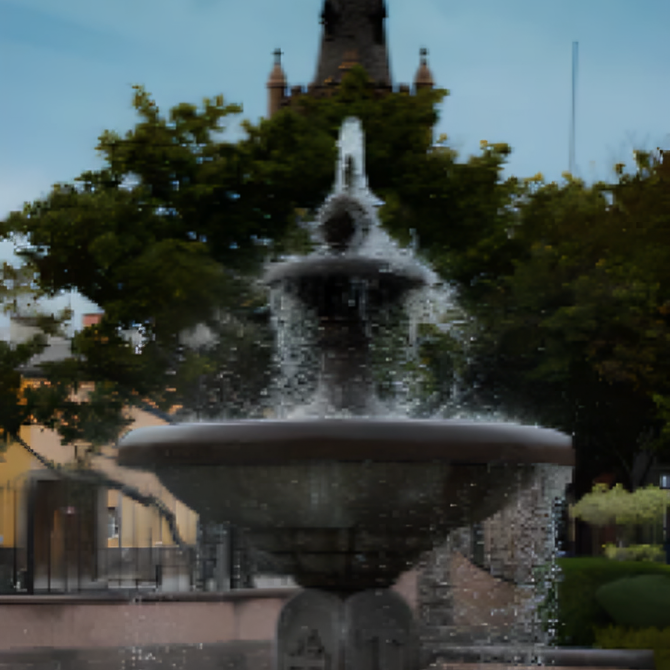Elevate your garden, patio, or indoor space to a realm of contemporary elegance with our select range of modern water features. At Water Features Adore, we specialize in bringing you an exclusive collection that embodies the essence of modern design and tranquility. Each water feature is carefully chosen to introduce a touch of sophistication and serenity to your environment.
Brief Overview of What Modern Water Features Are
Modern water features represent a diverse range of installations that include elements like fountains, waterfalls, and wall fountains. These features are integral to both indoor and outdoor environments, often embodying a contemporary design ethos. The modernity in these water features is not just about being new or recent; it's about embracing styles that fit seamlessly with current architectural and landscaping trends. This could mean minimalist designs with clean lines or more complex structures that still resonate with the simplicity and elegance of modern design.
Size and scale are also key components, ranging from small tabletop fountains to large cascading waterfalls in a garden setting. The flexibility in their design allows these water features to be adapted to various spaces, ensuring that each installation is unique and tailored to its environment.
Importance and Benefits of Incorporating Water Features in Modern Landscaping
The inclusion of modern water features in landscaping brings with it a multitude of benefits. Aesthetically, they add a focal point that elevates the overall design of a space. In garden settings, water features can create a harmonious balance between the natural and built environment, offering a tranquil escape within one's property.
Beyond their visual appeal, these water features contribute to the creation of a calming atmosphere, where the gentle sound of flowing water can reduce stress and promote relaxation. They also enhance the local ecosystem by attracting wildlife such as birds and beneficial insects, particularly in outdoor settings.
In terms of practical benefits, modern water features can improve air quality, especially indoor installations that act as natural humidifiers. They also offer an opportunity for sustainable landscaping, as many contemporary designs incorporate eco-friendly practices, such as recycling water and using solar-powered pumps.
Overall, integrating modern water features into landscaping is not just about adding a decorative element. It's about enhancing the quality of the environment, both aesthetically and ecologically, and creating a space that offers both visual beauty and a sense of peace.
Types of Modern Water Features
Fountains
Fountains are quintessential modern water features that come in an array of styles, suitable for both indoor and outdoor settings.
-
Wall Fountains: Perfect for limited spaces or as a stylish accent on a garden wall. Their vertical design can add a sense of height and drama to an area.
Contemporary wall fountains
often feature sleek materials like glass or polished metal, creating a modern look.
-
Tiered Fountains: A classic design that remains popular in modern settings, tiered fountains can range from simple, two-level designs to intricate, multi-tiered structures. Often the centerpiece in garden areas, providing a dynamic visual and auditory experience.
Ponds and Water Gardens
Incorporating ponds and water gardens into modern landscaping is a way to create a natural oasis in any setting. These features can be tailored to fit various sizes and styles, from small, reflective pools to larger, ecosystem-rich gardens.
- In a contemporary landscape, ponds are often designed with clean lines and minimalistic edges, sometimes integrating geometric shapes.
- Water gardens, with their aquatic plants and potentially fish like koi, offer a vibrant living element to a space. Modern designs might include innovative filtration systems and eco-friendly water management practices.
Waterfalls
Waterfalls are a versatile feature in modern landscaping, with options ranging from naturalistic to highly stylized designs.
-
Natural Waterfalls: Mimic the look and feel of a real waterfall, using rocks, plants, and natural contours. Fit well in larger garden settings, creating a focal point that blends with the surroundings.
-
Artificial Waterfalls: Ideal for both indoor and outdoor spaces, artificial waterfalls can be crafted to fit any environment. Modern designs may incorporate sleek materials like glass, metals, or custom-shaped concrete, offering a more contemporary appearance.
Streams
Both man-made and natural-looking streams add a dynamic element to modern landscapes.
- Man-made streams, designed with a variety of materials and plants, can meander through a garden, leading the eye and encouraging exploration.
- Natural-looking streams are crafted to mimic the flow and appearance of a natural watercourse, often integrated into larger landscape designs to create a sense of continuity and harmony with nature.
In summary, these various types of modern water features offer endless possibilities for enhancing both indoor and outdoor spaces. Whether it's the elegant simplicity of a fountain or the immersive experience of a water garden or waterfall, each feature can be tailored to fit the specific style and needs of the space, reaffirming the versatility and appeal of water in modern design.
Design Elements in Modern Water Features
Minimalist Design
Minimalist design in modern water features emphasizes simplicity and clarity through the use of clean lines and uncluttered spaces. This design philosophy is about stripping down elements to their essentials, creating a serene and tranquil environment.
- In minimalist water features, the focus is often on the water itself, with less emphasis on ornate decorations. Features like sleek fountains or smooth, reflective pools are common.
- The use of space is deliberate, creating a sense of openness. Even in small areas, minimalist designs can make the space feel larger and more open.
- This approach often complements contemporary architectural styles, where the water feature acts as a natural extension of the building’s aesthetic.
Want to dive deeper into modern water aesthetics? Check out our blog:
Modern Water Feature Designs for Minimalist Gardens.
Naturalistic Design
Naturalistic design in water features is about blending the man-made with the natural. It involves incorporating elements like rocks, plants, and even wildlife to create a feature that looks and feels like it could be a part of nature.
- This design often features irregular shapes and a variety of natural materials, creating a more organic appearance.
- In a garden setting, a naturalistic pond or stream can be the centerpiece, surrounded by lush vegetation and possibly inhabited by fish or frogs.
- The goal is to create a space that feels like a natural retreat, offering a respite from the built environment.
Lighting
Lighting plays a crucial role in enhancing the appearance and ambiance of modern water features.
- Strategic lighting can highlight certain aspects of the water feature, like illuminating a fountain to create dramatic shadows and reflections.
- In garden settings, lighting can create a magical nighttime landscape, making the water feature a focal point even after the sun sets.
- Besides aesthetics, lighting also serves a functional purpose, ensuring that the feature is visible and safe to navigate around at night.
Materials
The choice of materials in modern water features greatly influences their overall look and feel. Common materials include stone, concrete, and metal, each bringing its unique qualities.
-
Stone: Provides a natural and timeless look. It can be used in a variety of ways, from natural boulders in a pond to polished stone in a minimalist fountain.
-
Concrete: Offers versatility in shape and texture. It can be molded into almost any form, making it ideal for contemporary designs.
-
Metal: Used for its sleek and modern appearance, metals like stainless steel or copper can add a touch of elegance and sophistication to water features.
Each of these design elements - minimalist and naturalistic designs, lighting, and materials - plays a crucial role in defining the character and impact of modern water features. Whether the aim is to create a tranquil retreat or a striking architectural statement, these elements offer the flexibility to achieve a range of aesthetic and sensory experiences.
Technological Advances in Water Features
Automated Systems
The integration of automated systems in modern water features has significantly enhanced their functionality and ease of maintenance. These systems are crucial for water circulation, filtration, and aeration, ensuring the water feature remains clean and healthy.
-
Water Circulation: Automated pumps keep the water moving, which is essential for maintaining the clarity and quality of the water. In features like fountains and waterfalls, this also contributes to the visual and auditory experience.
-
Filtration Systems: Advanced filtration systems are key to keeping water features free of debris and contaminants, especially important in ponds and water gardens where plant and animal life need a clean environment.
-
Aeration: Aeration systems are vital for adding oxygen to the water, which is especially crucial in features with aquatic life. They help maintain the ecological balance, ensuring the water feature remains a healthy ecosystem.
Smart Features
The incorporation of smart technology in modern water features allows for greater control and monitoring, enhancing the user experience and convenience.
-
Remote Control: Smart systems enable the control of water features through mobile devices or voice-activated assistants. This allows for easy adjustments of elements like water flow, lighting, and even music in some sophisticated setups.
-
Monitoring: Advanced systems can monitor water quality, temperature, and other environmental factors, providing alerts for maintenance needs. This is especially beneficial for larger or more complex water features.
Energy Efficiency
Energy efficiency is a growing concern in modern landscaping, and water features are no exception. Eco-friendly practices are increasingly being adopted to minimize environmental impact.
-
Solar-Powered Options:
Solar-powered pumps
and lights are becoming popular in modern water features. They reduce electricity usage and are ideal for outdoor installations where sunlight is abundant.
-
Eco-Friendly Practices: Beyond solar power, other practices include using recycled water and designing water features to require minimal water top-up, reducing overall consumption.
The integration of these technological advances not only makes modern water features more enjoyable and easier to maintain but also aligns them with contemporary environmental consciousness. By combining aesthetics with technology and sustainability, these features represent a harmonious blend of art, functionality, and eco-responsibility.
Installation and Maintenance
Basic Steps and Considerations in Installing Various Types of Water Features
Installing modern water features requires careful planning and consideration of several factors to ensure their successful integration into a space.
-
Site Selection: Choose a location that complements the overall landscape design and is accessible for maintenance. Consider sunlight exposure for outdoor features, especially if they include plants or solar-powered elements.
-
Size and Scale: Ensure the size of the water feature is appropriate for the space. A large fountain in a small garden might overwhelm the area, while a tiny feature in a large space might seem lost.
-
Plumbing and Electrical Needs: For features like fountains and waterfalls, assess the need for plumbing and electrical connections. Hiring professionals for this step is often advisable to ensure compliance with safety standards.
-
Foundation and Support: Especially for heavier features like stone fountains or large ponds, ensure the ground is properly prepared to support the weight.
-
Aesthetics and Style: The style of the water feature should complement the surroundings. Whether it's a contemporary piece or a naturalistic design, it should feel like a cohesive part of the overall landscape.
Tips for Ongoing Maintenance and Care
Regular maintenance is key to keeping modern water features in top condition.
-
Regular Cleaning: Remove debris like leaves and twigs, and clean filters and pumps to prevent clogging and ensure efficient operation.
-
Water Quality Management: Regularly check and adjust the water levels. In ponds and water gardens, monitor the water's pH level and clarity to maintain a healthy environment for aquatic life.
-
Winter Care: In colder climates, take steps to protect the water feature from freezing temperatures, such as removing or covering pumps and draining water to prevent damage.
Troubleshooting Common Issues
Even with the best care, water features can encounter issues that need troubleshooting.
-
Pump Problems: If a pump stops working, check for clogs or electrical issues. Ensure it's fully submerged (for submersible types) and that the power source is functioning.
-
Leaks: For ponds and lined water features, look for wet spots around the perimeter for signs of leaks. Patch kits are available for minor repairs.
-
Algae Growth: Excessive algae can be controlled through regular cleaning, proper filtration, and controlling sunlight exposure, particularly in ponds and water gardens.
-
Uneven Water Flow: In fountains and waterfalls, uneven water flow can often be adjusted by repositioning the stones or elements that direct the water.
By following these guidelines for installation and maintenance, owners can ensure their modern water features remain beautiful, functional, and an enduring part of their landscaping design.
Environmental Impact and Sustainability
Environmental Considerations of Water Features
The integration of modern water features into landscapes brings with it various environmental considerations. While they enhance the aesthetic and sensory experience of a space, it's important to be mindful of their impact on the natural environment.
-
Water Consumption: Water features, especially large ones, can consume a significant amount of water. It's important to consider the source of this water and the impact its usage has on local water reserves.
-
Ecosystem Impact: Outdoor water features like ponds and waterfalls can affect the local ecosystem. They can provide habitats for wildlife but also have the potential to disrupt local biodiversity if not managed correctly.
-
Chemical Usage: Maintaining clear and clean water often involves chemicals, which can have downstream effects on the environment. Choosing eco-friendly treatment options is crucial to minimize this impact.
Sustainable Practices in Water Usage and Conservation
Adopting sustainable practices in the design and maintenance of modern water features is essential to mitigate environmental impacts and promote conservation.
-
Recirculating Water Systems: Most modern water features use recirculating systems, which reduce water consumption by continually using the same water. This is particularly important in areas facing water scarcity.
-
Rainwater Harvesting: Collecting and using rainwater for water features is an excellent way to conserve water. This can be particularly effective in regions with ample rainfall.
-
Drought-Resistant Design: In areas prone to drought, designing water features that require minimal water top-up is vital. This can include the use of drought-resistant plants in water gardens and the selection of features that lose less water to evaporation.
-
Eco-Friendly Materials and Practices: Choosing materials and construction practices that have a lower environmental footprint helps in reducing the overall impact. This includes using locally sourced materials, solar-powered pumps, and natural methods for water purification.
-
Wildlife Support: Designing water features that support local wildlife can enhance biodiversity. This includes creating habitats within the feature, like shallow areas for birds and safe zones for amphibians.
The Appeal and Benefits of Modern Water Features
The allure and benefits of modern water features in contemporary landscaping are multifaceted and significant. These features, ranging from elegant fountains to serene ponds and dynamic waterfalls, bring more than just an aesthetic enhancement to a space; they create a focal point of tranquility and natural beauty. The sound of flowing water has a universally calming effect, making these features ideal for creating a peaceful retreat in both outdoor and indoor environments.
Moreover, modern water features are not just visually appealing; they can also contribute positively to the local ecosystem, especially when designed with environmental sustainability in mind. They offer habitats for wildlife and can improve air quality, especially in urban areas. Their versatility in design—from minimalist styles that complement contemporary architecture to more naturalistic designs that blend seamlessly with the garden landscapes—ensures that there is a water feature suited to every taste and setting.
The incorporation of advanced technology, such as automated systems for maintenance and smart features for ease of use, further enhances the appeal of these water features. These technological integrations ensure that the beauty and benefits of the water features can be enjoyed with minimal effort and environmental impact.
Given these numerous benefits, it is no surprise that more and more people are considering adding modern water features to their own spaces. Whether it's a small indoor fountain that adds a soothing presence to a home office or a large garden waterfall that transforms a backyard into a personal oasis, these features can significantly elevate the quality of a living or working environment. They are not just decorative elements but investments in a more peaceful and aesthetically pleasing environment.
Modern water features stand as a testament to the harmony that can be achieved between human creativity and the natural world. They offer a unique blend of art, nature, and technology, creating spaces that are not only beautiful to look at but also contribute to the well-being of both the inhabitants and the environment. Whether for home or commercial spaces, incorporating a water feature could be a transformative step towards creating a more serene, engaging, and sustainable environment.
Integrating Modern Water Features with Classic Styles and Elements
Blending modern water features with classic styles and traditional garden elements can create a landscape that is both timeless and contemporary. This fusion approach allows for the best of both worlds – the sleek, innovative appeal of modern design alongside the charm and elegance of classic features. Here’s how modern water features can harmoniously coexist with classic style water features, ponds, bird baths, garden statues, and urns:
Classic Style Water Features and Modern Design
Combining classic water features like traditional tiered fountains with modern design elements can add a unique character to any space. For instance, a classic fountain can be updated with modern materials like sleek metal or integrated LED lighting, providing a contemporary twist to a traditional design. This juxtaposition creates a focal point that is both nostalgic and forward-looking.
Water Feature Ponds
Modern water features can be seamlessly integrated into classic-style ponds. The addition of a minimalist-style waterfall or a sleek, geometric sculpture in the pond can enhance its visual appeal without overshadowing the pond’s natural beauty. Modern filtration and aeration systems can also be employed in these ponds, ensuring clarity and ecological balance while maintaining a classic aesthetic.
Bird Baths
Bird baths are timeless elements in many gardens. Integrating modern design into these features can be as simple as utilizing contemporary materials or incorporating a subtle water movement mechanism to keep the water fresh and appealing to birds. A modern-style bird bath can become a striking piece in a garden, blending with both contemporary and classic elements around it.
Garden Statues
Garden statues, a staple of classic garden design, can be complemented by modern water features. For example, a traditional statue can be placed near a modern, streamlined water wall, creating a contrast that highlights the beauty of each element. Alternatively, modern interpretations of classic statues can be used as central pieces in contemporary water features, bridging the old and the new.
Water Feature Urns
Urns are versatile elements that can be incorporated into both classic and modern water feature designs. A traditional urn can be used as a part of a modern water feature, where water flows in a clean, controlled manner, combining the rustic charm of the urn with the simplicity of modern design. Conversely, a modernly styled urn can be introduced into a traditional garden setting, serving as a contemporary water feature among more classic garden elements.
In essence, the integration of modern water features with classic garden styles and elements is a testament to the versatility and adaptability of water in landscape design. This blend of old and new not only enriches the visual landscape but also creates a garden space that is both diverse in style and unified in its beauty. Whether through subtle additions or bold contrasts, the fusion of modern and classic elements in water features can produce a garden that is rich in texture, style, and history.
Top Picks at Water Features Adore for Modern Water Features
Water Features Adore offers a range of modern water features that can elevate any garden or indoor space. Here are some top picks, each distinct in style and design:
The AquaLuxe is a stunning piece that combines the elegance of traditional fountains with a modern twist. Featuring two spouts, this garden water fountain creates a serene, symmetrical water flow, perfect for contemporary outdoor spaces seeking a touch of classic charm. Its design is ideal for creating a tranquil atmosphere in both small and large gardens.
The Reflection water feature is a masterpiece of modern design, boasting two spouts that create a mirror-like water flow. Its sleek appearance and gentle water sounds make it a perfect addition to minimalist or contemporary landscapes. This feature not only serves as a visual focal point but also enhances the calming ambiance of any outdoor area.
Drawing inspiration from Mediterranean aesthetics, the Nebula water feature incorporates an urn design that exudes rustic charm. This feature beautifully blends the old-world look of the urn with a modern approach to water flow, making it an ideal choice for gardens that aim to mix traditional and contemporary elements. It’s a standout piece for those looking to add a touch of Mediterranean flair to their space.
The LuxFlow is an epitome of modern elegance. It features cascading waterfall bowls, creating a dynamic and mesmerizing water movement. This water feature is a perfect centerpiece for any garden, offering a visually striking design that is both contemporary and timeless. The sound of cascading water adds a layer of tranquility to the environment.
Verity is a modern LED waterfall wall fountain that combines sleek design with the soothing presence of water. This feature is particularly suited for urban spaces or contemporary indoor settings. The integration of LED lighting not only enhances the water's visual appeal but also creates a captivating ambiance during the evening, making it a perfect addition for those looking to add a modern and sophisticated touch to their space.
Each of these products from Water Features Adore demonstrates a commitment to combining innovative design with the soothing essence of water. Whether you're looking for a feature that is classically inspired or strictly modern, there's something to suit every taste and transform any space into a serene and stylish haven.
Reach out to us to explore our extensive collection of garden statues


